The Walker’s Haute Route is a 14-stage trek from Chamonix, France to Zermatt, Switzerland. It is a tough yet rewarding experience through the French and Swiss Alps that crosses 10 mountain passes and offers incredible scenery along the way.
It is a beast of a trek! It took us 13 days, averaging 16 km (10 miles) with 1,140 meters (3,740 feet) of total ascent per day, to complete the entire trek. This amount of time is typical due to the spacing of the lodging options along the way.
It can be difficult for many people to take that much time for a holiday, especially since you also have to factor in time to get there and to get home. On top of that, many people might want to experience the Walker’s Haute Route but ease back on the strenuousness when possible. And many people simple want to enjoy a portion of the Haute Route instead of the whole thing.
Therefore, I put this guide together to help you plan your Walker’s Haute experience.
This guide starts off outlining a few factors to consider as you plan the experience that is right for you. Then it outlines decisions you need to make regarding some of the stages, where shortcuts can be taken, and it provides suggestions for those who want to shorten or lengthen their experience.
Whether you plan to hike the entire thing or scale back, there is valuable information in this guide you should read, and decisions you need to make, before you book your Walker’s Haute Route accommodations.
Planning Factors
Factor #1: Time
As you plan your Walker’s Haute Route experience, the first thing to think about is how much time you can spend on holiday.
It takes most people 13 to 14 days to hike the entire distance of the Walker’s Haute Route. If you add a day for getting to Chamonix (typically via Geneva), a day to get from Zermatt to your departure city (typically Geneva or Zurich), and a day to return home, then you are looking at a 16-to-17-day trip.
If you have this much time for a holiday, then awesome! You might also consider adding more time to Chamonix and Zermatt in order to enjoy the hiking in those towns. But if you do not have that much time, then you will need to limit yourself to just hiking a portion of the Haute Route or divide the Haute Route up across multiple holidays.
A combination of all of those options is something to consider as well. You might want to limit yourself to hiking a portion of the Walker’s Haute Route so you can also spend time in Chamonix and/or Zermatt.
We will go into more detail regarding all of these options as you keep reading.
Factor #2: Travel Style & Accommodations
The second thing to think about as you plan your Walker’s Haute Route experience is the type of accommodations you prefer.
Do you prefer a more rugged experience and want to stay in as many mountain huts with dormitories and shared baths as possible? Or do you prefer a more luxury experience and prefer to stay in nicer hotels, avoiding the mountain huts when possible? Or perhaps your travel style falls somewhere in-between.
There are four stages that end at mountain huts. If you are not thrilled with the idea of staging in mountain huts, then know that one of those stages is considered optional and can be avoided. And at the end of another stage, you can opt to take a bus to a nearby town and stay in a hotel.
On the luxury side of the spectrum, there is one town along the Walker’s Haute Route where you can stay in a 5-star hotel with a spa. You might laugh now but once you reach the end of that stage you might very well welcome a spa treatment.
More on all this later. For now, start thinking about your travel style and the type of accommodations you prefer.
Factor #3: Difficulty
The third thing to think about as you plan your Walker’s Haute Route experience is the level of difficulty you are willing and prepared to endure.
Are you in shape (or is there time to get in shape) to hike the entire Walker’s Haute Route? Are you set on walking the entire way or are you okay with taking gondolas to help ease the strenuousness of some stages? Or maybe you want to add rest days along the way.
You need to be fairly fit in order to hike day after day, mountain pass after mountain pass. Even if you add in rest days, the level of fatigue has a way of sticking with you.
We will go into more detail regarding fitness and ways to ease the strenuousness as you keep reading.
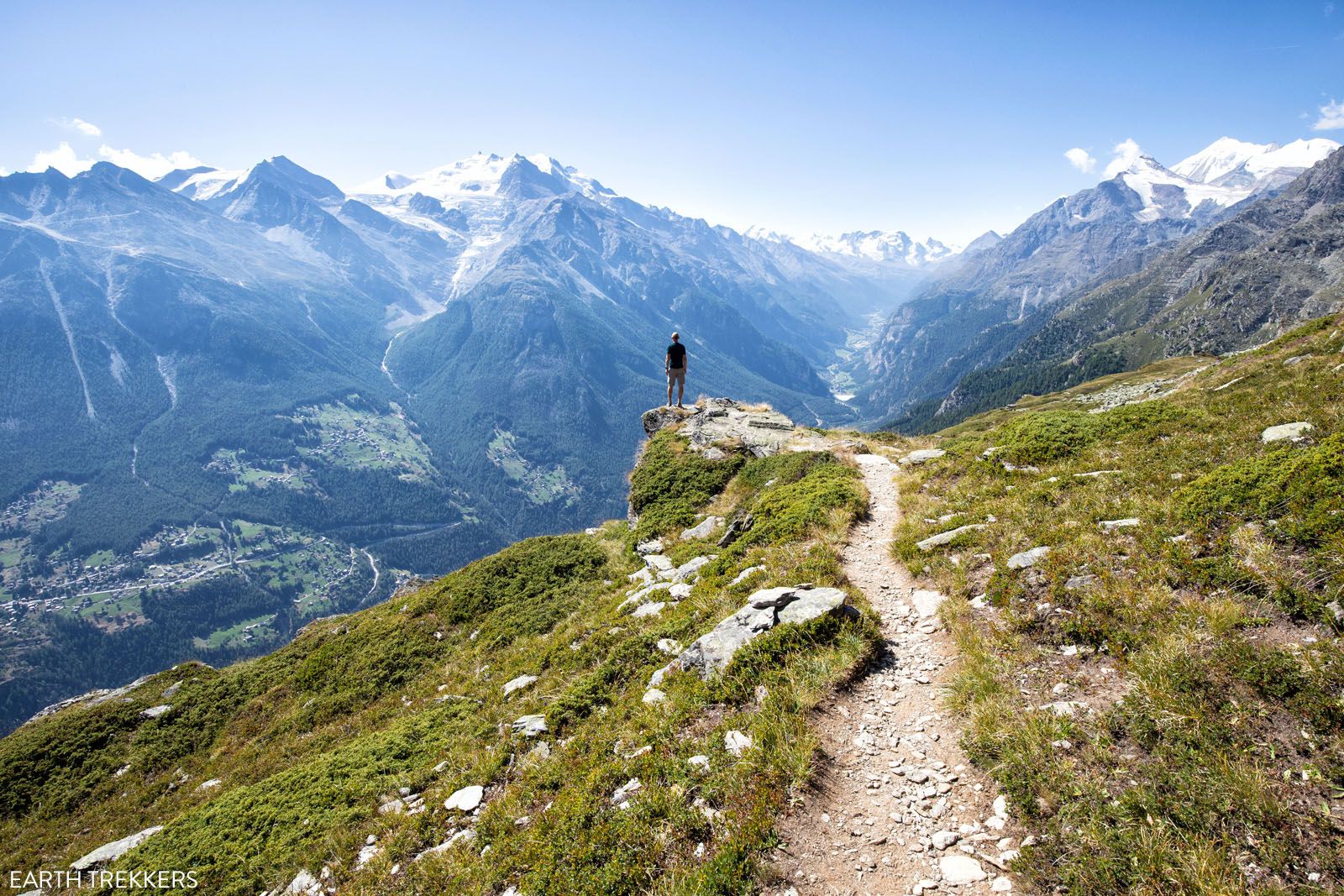
Walker’s Haute Route Stage 12
Walker’s Haute Route Stage Decisions
The Walker’s Haute Route involves 14 stages, and for a few of these stages you need to decide how you plan to hike them because those decisions will impact the duration of your trip and where you book accommodations.
Stage 1: Chamonix to Argentiere
Stage 1 is one of the easiest and shortest stages of the trek. It’s also one of the least interesting and the most common one to skip, for those who have limited time.
There are several strategies to consider regarding this stage. You can complete it by itself, you can combine it with your day of arrival, you can combine Stage 1 and Stage 2 together, or you can simply skip it.
The first strategy is to complete Stage 1 by itself. This is a good strategy to consider if you are travelling at a leisurely pace since it requires dedicating a day to this stage. You could also use some portion of that morning to see the town of Chamonix or to get your gear ready. This is also a good strategy if the thought of combining Stages 1 and 2 together seems too strenuous of a way to start the Walker’s Haute Route.
The second strategy is to hike Stage 1 immediately upon arrival into Chamonix. This is a good strategy to consider if you can arrive Chamonix early enough to start the trek and you are looking to save a day on your overall trip duration. But if you plan to use a luggage transfer service then things get complicated with arranging a pickup location since you haven’t checked into a hotel yet, so it is not the best strategy in that situation.
PRO TRAVEL TIP: With either of the strategies mentioned so far you can sleep in Argentière or Chamonix after you complete Stage 1. Both towns are very well connected by frequent train service. If you slept in Chamonix the night before, then sleeping there again will save you from having to check in and out of another hotel. In that case you could hike to Argentière, take the train back to Chamonix, and then return to Argentière via train the next day to start Stage 2. The Walker’s Haute Route goes right past the Argentière train station, so it is very convenient.
The third strategy to consider is to combine Stages 1 and 2 together, which is what we did. If you are up for it, then this strategy is a great way to reduce a 14-stage trek to 13 days. But it does require you to get an early morning start due to the distance you need to cover, so it is best to only attempt this if you slept in Chamonix the night before.
The fourth strategy to consider is to skip Stage 1 since it is the least scenic of all of the stages. Many guided tours will do this as a way to ‘offer a better customer experience’. But even though it is the least exciting stage it is still part of the official route.
To help you decide which strategy is right for you, see our hiking stats, elevation profile, and trail summary for Stage 1 and Stage 2.
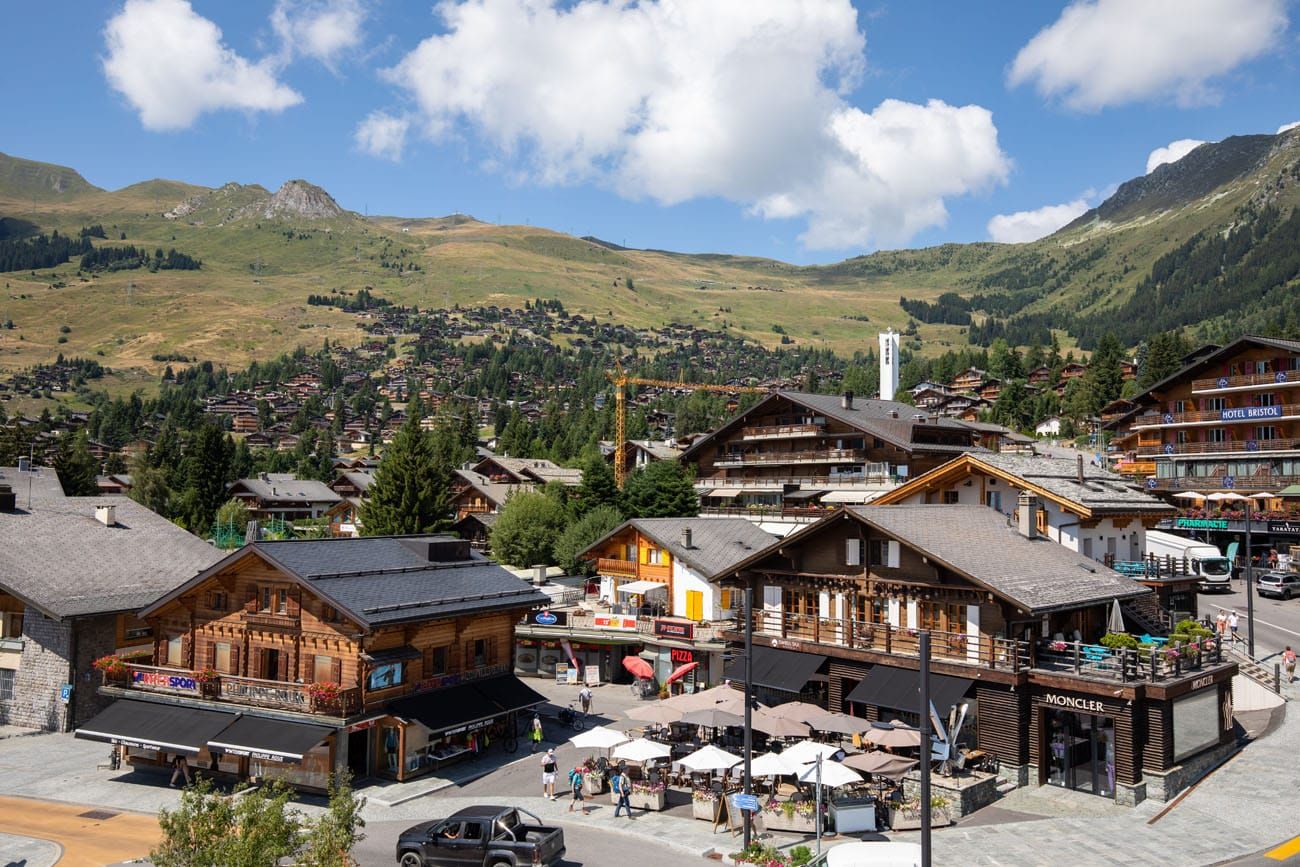
Verbier
Stage 4: Sleeping in Le Châble or Verbier
Traditionally Stage 4 ends in Le Châble. But Verbier, with its ski village charm, sits higher on a mountain above Le Châble and has a lot more lodging options and amenities.
You will find all kinds of lodging options in Verbier, including 5-star resorts with a spa. So, if you want to glamp it up a bit then this is the town to do it. You might even consider adding a recovery day here.
While we were in Verbier we were able to restock on sunscreen at the pharmacy and get Swiss Francs out at the ATM (which came in handy at the upcoming mountain huts). They also have lots of gear shops in town. This is a great place to make any gear changes you need to make while it is still early in the trek, since you are about to head into the most remote portion of the trek.
Verbier is not on the Walker’s Haute Route. Stage 4 ends near a gondola that runs between Le Châble and Verbier, so Verbier is very easy to get to. When you are ready to start Stage 5, you just take the gondola back down to Le Châble.
There is also a gondola that runs between Verbier and Les Ruinettes. Les Ruinettes sits higher on a mountain above Verbier and is on the Walker’s Haute Route. That makes Verbier a gondola connection point between Le Châble and Les Ruinettes, which opens you up to some options to consider related to Stage 5 that we will discuss in the next several sections.
See a list of accommodation options in Le Châble and Verbier in our guide on How To Book Your Walker’s Haute Route Accommodations.
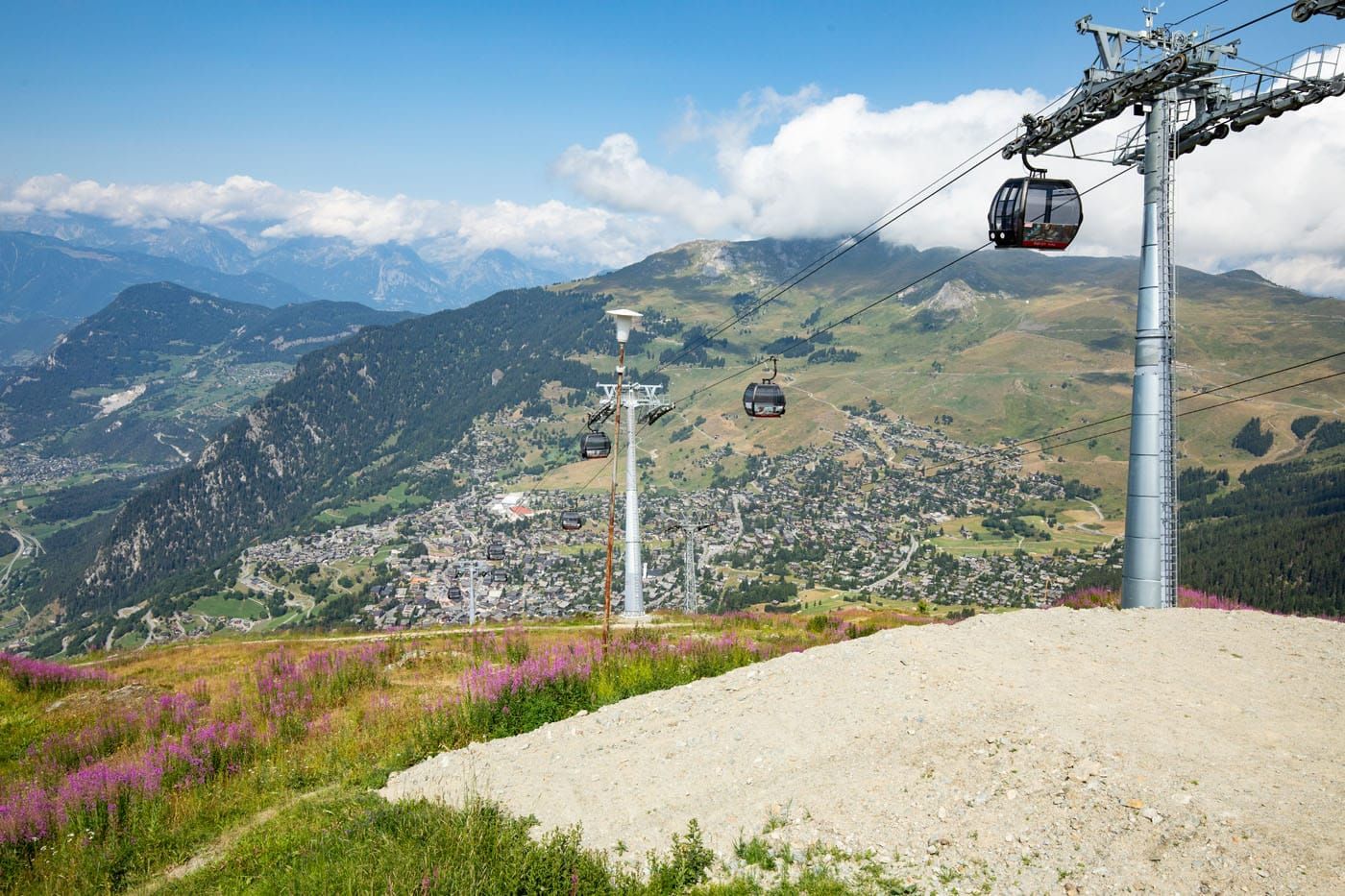
The gondola from Verbier to Les Ruinettes
Stage 5: Should you take a Gondola?
Stage 5 involves a massive mountain climb as you ascend from Le Châble to Les Ruinettes. It then eases as you continue onwards to Cabane du Mont Fort.
If you are looking to ease the strenuousness of the Walker’s Haute Route, then this would definitely be a mountain climb to avoid. As mentioned in the previous section there is a gondola that runs from Le Châble to Verbier to Les Ruinettes. So, whether you stay in Le Châble or Verbier, you can get to Les Ruinettes easily by gondola and avoid the most strenuous part of this mountain ascent.
This can also be a game day decision. If you wake up the morning you are supposed to begin Stage 5 and feel too fatigued, then you can take the gondola to Les Ruinettes and start hiking from there. It doesn’t matter if you slept in Le Châble or Verbier the night before.
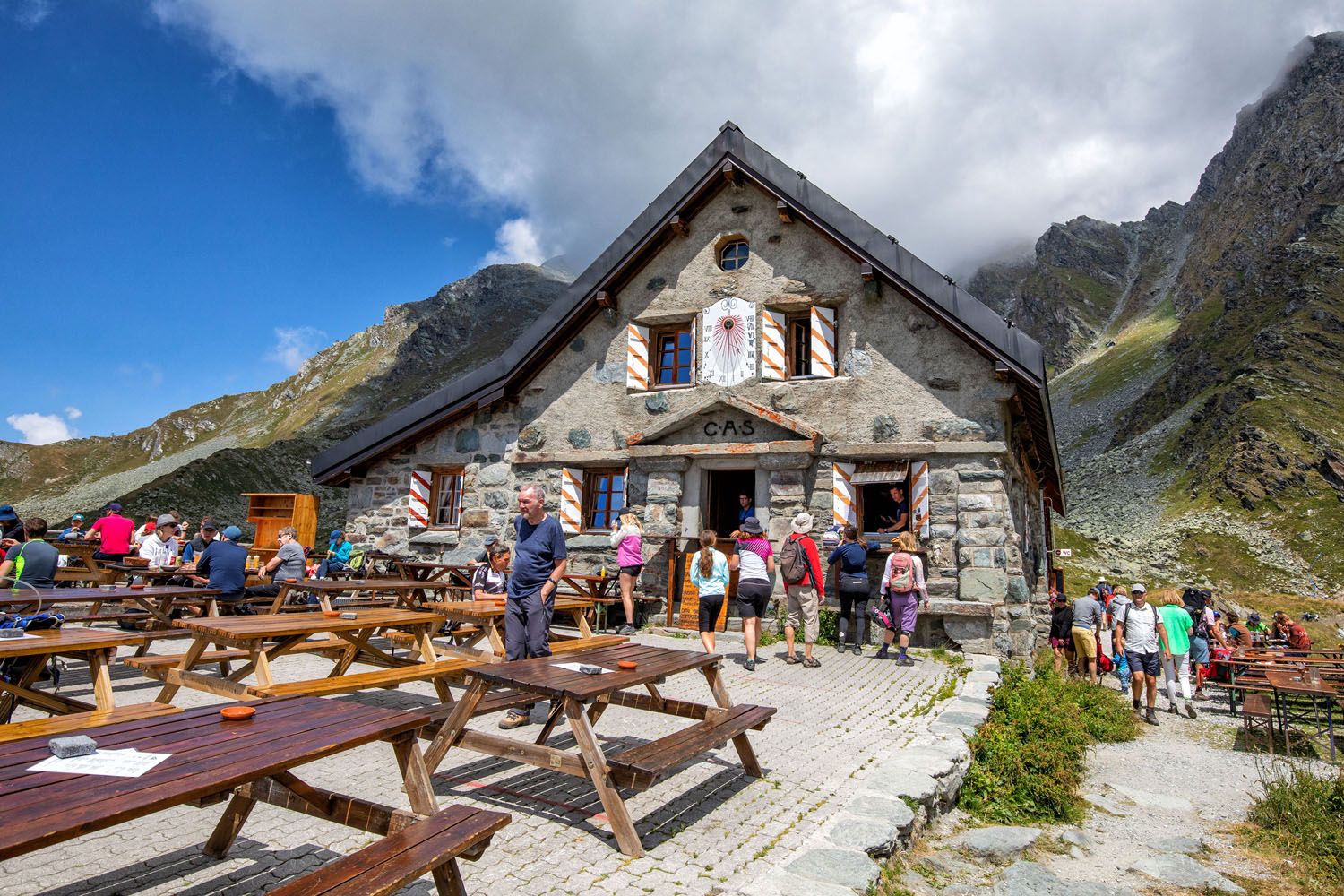
Cabane du Mont Fort
Stage 5: Cabane du Mont Fort or Cabane de Louvie
Traditionally Stage 5 ends at Cabane du Mont Fort. But as I was planning our Walker’s Haute Route experience, I had heard from multiple sources that Cabane de Louvie is a much nicer place to spend the night. And after having seen both, I have to agree.
Cabane de Louvie is a charming and well-kept mountain hut that sits on a lake surrounded by mountains. The hut is beautiful, and the setting is gorgeous! Plus, in addition to their dorm rooms, they have two private rooms with two beds each. That can be a great score if you are looking to avoid staying in dormitories as much as possible.
The only problem is that Cabane de Louvie is 8.4 km (5.3 miles) beyond Cabane du Mont Fort. For a large portion of that distance you are hiking Stage 6. But some of that distance includes a one-hour detour to descend 420 m (1,375 feet) down to the mountain hut. And you have to re-ascend the same amount the next day in order to rejoin Stage 6.
Basically, Cabane de Louvie is a detour off the Walker’s Haute Route trail. It takes more time to get here, but you also get to visit a quieter, more off-the-beaten-path location in Switzerland.
The whole way down to Cabane de Louvie we questioned if we had made a bad decision with staying here, knowing that we would have to make this ascent the next morning. The Walker’s Haute Route is challenging enough, and we just made it more challenging by staying at this mountain hut. But after staying there we had no regrets at all and recommend it.
With that said, the traditional Stage 5 is a tough day as it is, so adding on a stay at Cabane de Louvie is only for the fittest and fastest hikers. But there are alternative strategies regarding Stage 5 that should be considered as you plan your Walker’s Haute Route experience. We will cover these next.
See our hiking stats, elevation profiles, and trail summary for Stage 5.
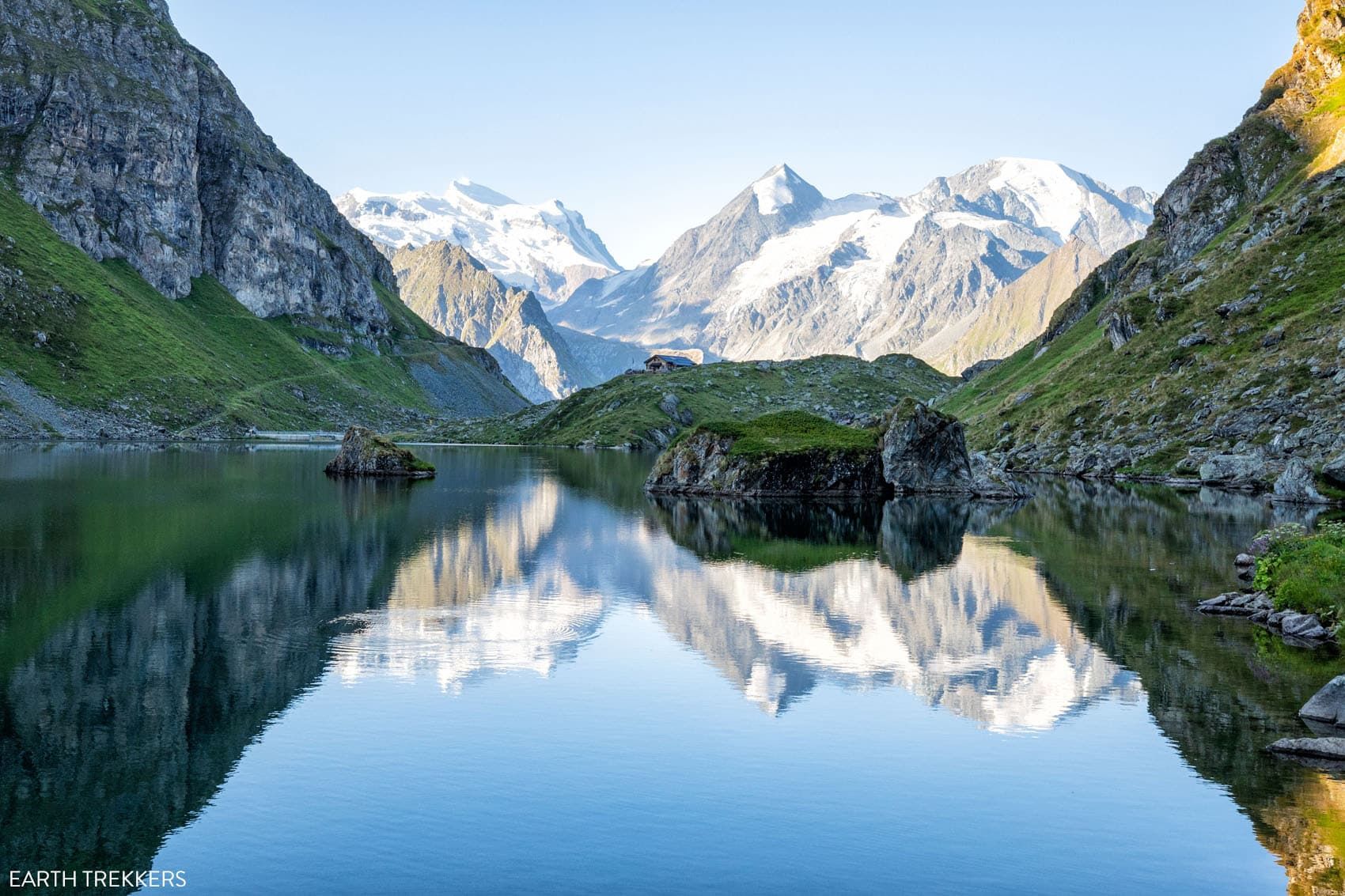
Lac de Louvie and Cabane de Louvie
Stage 5: Strategies Regarding This Stage
As discussed in the previous sections, there are gondolas that can ease the strenuousness of the mountain climb from Le Châble to Les Ruinettes. And there are two mountain hut choices for where you end Stage 5. This opens you up to a range of strategies to consider regarding this stage.
1. Hike the official route. Stay in Le Châble or Verbier at the end of Stage 4 and then hike to Cabane du Mont Fort and sleep there per the traditional Stage 5. Verbier is a great place to stay but it is not on the Haute Route. So, if you stay in Verbier then take the gondola from Le Châble to Verbier after you complete Stage 4 and then take the same gondola back down to Le Châble when you are ready to start Stage 5.
The hike from Le Châble to Cabane du Mont Fort is 13.3 km (8.2 miles) with 1,700 meters (5,570 feet) of total ascent. A big day!
2. Add on Cabane de Louvie. Hike the official route to Cabane du Mont Fort but don’t sleep there. Instead, hike the beginning of Stage 6 and then take the detour down to Cabane de Louvie.
This should only be attempted by the fittest and fastest hikers. We started at 8:00 am and didn’t reach Cabane de Louvie until almost 5:00 pm. It is a HUGE day with a total distance of 21.7 km (13.5 miles) with 2,130 m (7,000 feet) of total ascent. The total distance isn’t too bad, but the total ascent is extreme!
If you are still considering this option, then you also need to know that the Sentier des Chamois portion of Stage 6 (which leads you to Col Termin) is a narrow trail that runs along the side of a mountain. And at times there is a steep drop off from the trail. You have to watch your step and you would be walking this near the end of your day when you are most fatigued.
3. Skip the first part of Stage 5. Start Stage 5 by taking the gondola to Les Ruinettes. This eliminates a huge mountain climb. And you will not miss much in terms of scenery. The views may actually be better from the gondola than from the hiking trail.
Once in Les Ruinettes, it takes about an hour and a half to walk to Cabane de Mont Fort and about 4.5 hours to walk to Cabane de Louvie. This is a great option if you want to stay at Cabane de Louvie rather than Cabane du Mont Fort. You eliminate the hefty climb of Stage 5, still get the views from Les Ruinettes, and can hike to Cabane de Louvie on fresher legs.
4. Split Stage 5 into two days. If you don’t want to shortcut the Haute Route by using gondolas, but the hiking stats to Cabane du Mont Fort or Cabane de Louvie seem daunting, then break this stage up into two days.
On one day, hike from Le Châble to Les Ruinettes. Then ride the gondola down to Le Châble or Verbier (wherever you are staying). On the next day, ride the gondola back up to Les Ruinettes and then hike to Cabane du Mont Fort or Cabane de Louvie.
5. Stay in Cabane du Mont Fort and Cabane de Louvie. This is a great strategy for anyone looking to take a leisurely pace through one of the more remote parts of the Walker’s Haute Route and experience all of the mountain huts along the way. This will add on one additional day to the Walker’s Haute Route.
6. Add the climb to Le Ruinettes to the end of Stage 4. Once you reach Le Châble continue onward to Les Ruinettes and then take the gondola down to Le Châble or Verbier (wherever you are staying). On the next day, ride the gondola back up to Les Ruinettes and then hike to Cabane du Mont Fort or Cabane de Louvie.
Stage 4 is mostly a descent over its 13.5 km (8.4 miles) distance, but you will still have 213 m (700 feet) of total ascent along the way. Expect this stage to take roughly 4 hours to complete. You would then be adding on another roughly 9.2 km (5.7 miles) and 1,370 m (4,500 feet) of total ascent by continuing to Les Ruinettes, bringing the total to 22.7 km (14.1 miles) and 1,583 m (5,200 feet).
If you want to stay at Cabane de Louvie without short cutting the Haute Route, then this could be a more attractive option than the “Add on Cabane de Louvie” option above. It helps break up some of the total ascent from that option. You just have to be prepared to end the day with a massive climb instead of starting the massive climb with fresh legs.
To help you decide which strategy is right for you, see our hiking stats, elevation profile, and trail summary for Stage 4, Stage 5, and Stage 6.
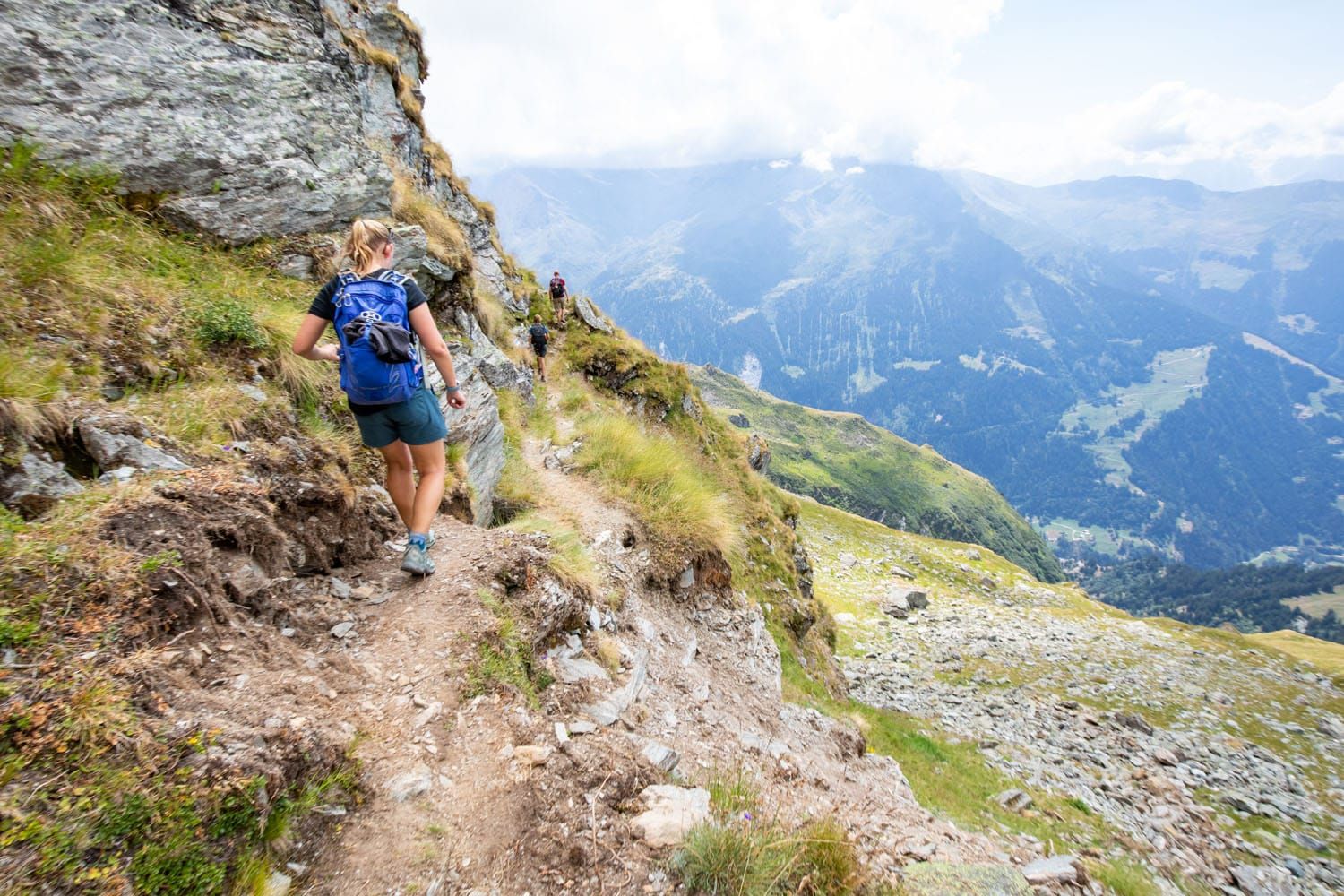
Sentier des Chamois
Stage 8: Les Haudères or La Sage
Traditionally Stage 8 ends in La Sage, which sits higher up on the mountain side overlooking Les Haudères. While following the Walker’s Haute Route you will pass right through the heart of Les Haudères before you ascend up to La Sage. The trail between these two small towns is 2.1 km (1.3 miles) with 212 m (700 feet) of total ascent. So, you can really stay in either town.
Stage 8 is a fairly light day compared to other stages of the Haute Route; I would call it an active recovery stage. Staying in Les Haudères just makes it even more of a recovery day. But then you have to add the extra 212 m (700 feet) of total ascent up to La Sage onto Stage 9.
Staying in either place has its advantages. Staying in Les Haudères, which is what we did, gives you more recovery and staying in La Sage makes Stage 9 a little easier.
I wouldn’t stress over this decision. There are not a lot of accommodation options in either of these towns, so I recommend looking at all of those options and picking the one that best suits your travel style.
See our hiking stats, elevation profile, and trail summary for Stage 8. And see options for where to stay in both of these towns in our guide on How to Plan Your Walker’s Haute Route Accommodations.
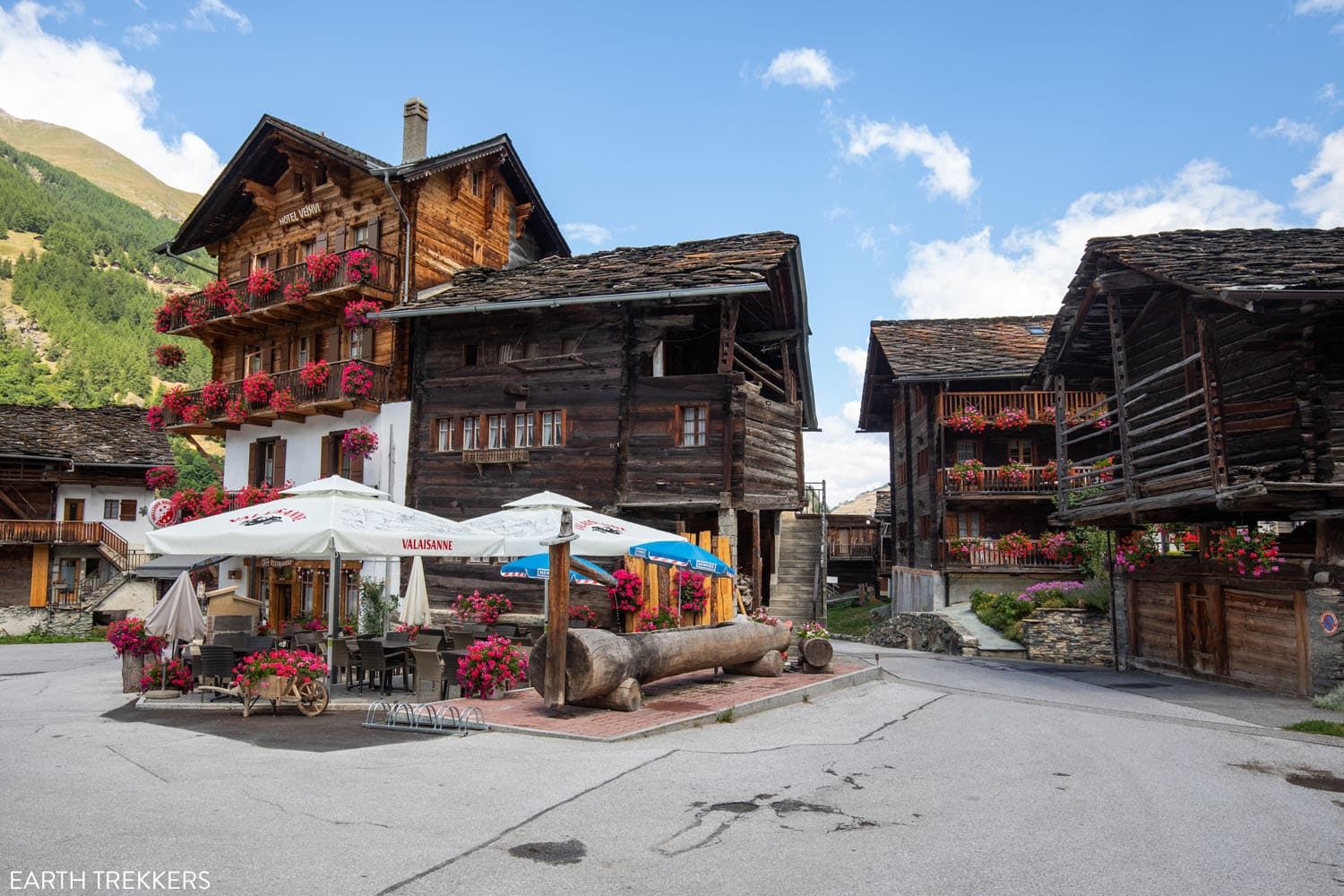
Les Hauderes
Stage 9: Cabane de Moiry or Grimentz
As you follow this stage you will walk in-between the Moiry Glacier (higher up on your right) and Lac de Moiry (lower down on your left). It is at this point where there is a parking lot (Moiry Glacier Parking Lot) and a bus stop (Moiry Glacier Bus Stop).
From here you have three options on how to end this day.
1. End at Cabane de Moiry. This is the traditional end to Stage 9. Cabane de Moiry is set on the edge of a mountain next to the Moiry Glacier. And it has epic close-up views of the glacier.
From the Moiry Glacier Parking Lot it is a 3 km (1.85 mile) uphill hike that takes about an hour.
This is a super busy spot as many people park in the parking lot or take the bus in order to then hike to Cabane de Moiry for lunch and for a closer view of the glacier. After just being in the most remote part of the Walker’s Haute Route the busyness here surprised us.
2. End at the Moiry Glacier Bus Stop. Once you reach the parking lot/bus stop area catch the bus to Grimentz and stay in a hotel. This is a lovely town where you have access to restaurants, a grocery store, gear shops, ATM, etc.
You would then return via bus the next day to the same spot to rejoin the Walker’s Haute Route and begin Stage 10. A little higher up on the hillside from the Moiry Glacier Bus Stop is a trail junction. Turn right to head up to Cabane de Moiry or turn left to start Stage 10.
3. End at the Moiry Barrage Bus Stop. By selecting this option, you will hike the first portion of Stage 10 today instead of tomorrow. This portion of Stage 10 runs along the hillside above Lac de Moiry. It starts on the glacier side of the lake and runs to the dam side of the lake, where you leave Stage 10 to make a short descent to the Moiry Barrage Bus Stop. From here take the bus to Grimentz and stay in a hotel.
Return via bus the next day to this same spot to finish Stage 10. But before selecting this option know that adding on this section of stage 10 will bring today’s hiking total to 15.8 km (10 miles) with 1,725 m (5,660 feet) of total ascent. It’s a big day!
Game Day Decision. If you have plans to stay in Grimentz, then ending the day at either bus stop can be decided based on how you feel and the weather once you reach the Moiry Glacier Bus Stop. Just book your bus tickets (in advance) between the Moiry Glacier Bus Stop and Grimentz. That will cover either situation since the Moiry Glacier Bus Stop is the last stop on the route.
What we did. We had plans to stay in Grimentz. When we reached the Moiry Glacier Parking Lot we debated if we should walk up to Cabane de Moiry for the view and then back down to catch the bus. We could see the Moiry Glacier in the distance and we still had the energy, but ultimately decided to spend that energy to hike some of Stage 10 instead. So, we continued onto the Moiry Barrage Bus Stop.
The busyness of the area and the fact that you already see a fair number of glaciers along the Walker’s Haute Route, as well as in Chamonix and Zermatt were factors in our decision.
See our hiking stats, elevation profile, and trail summary for Stage 9 and Stage 10.
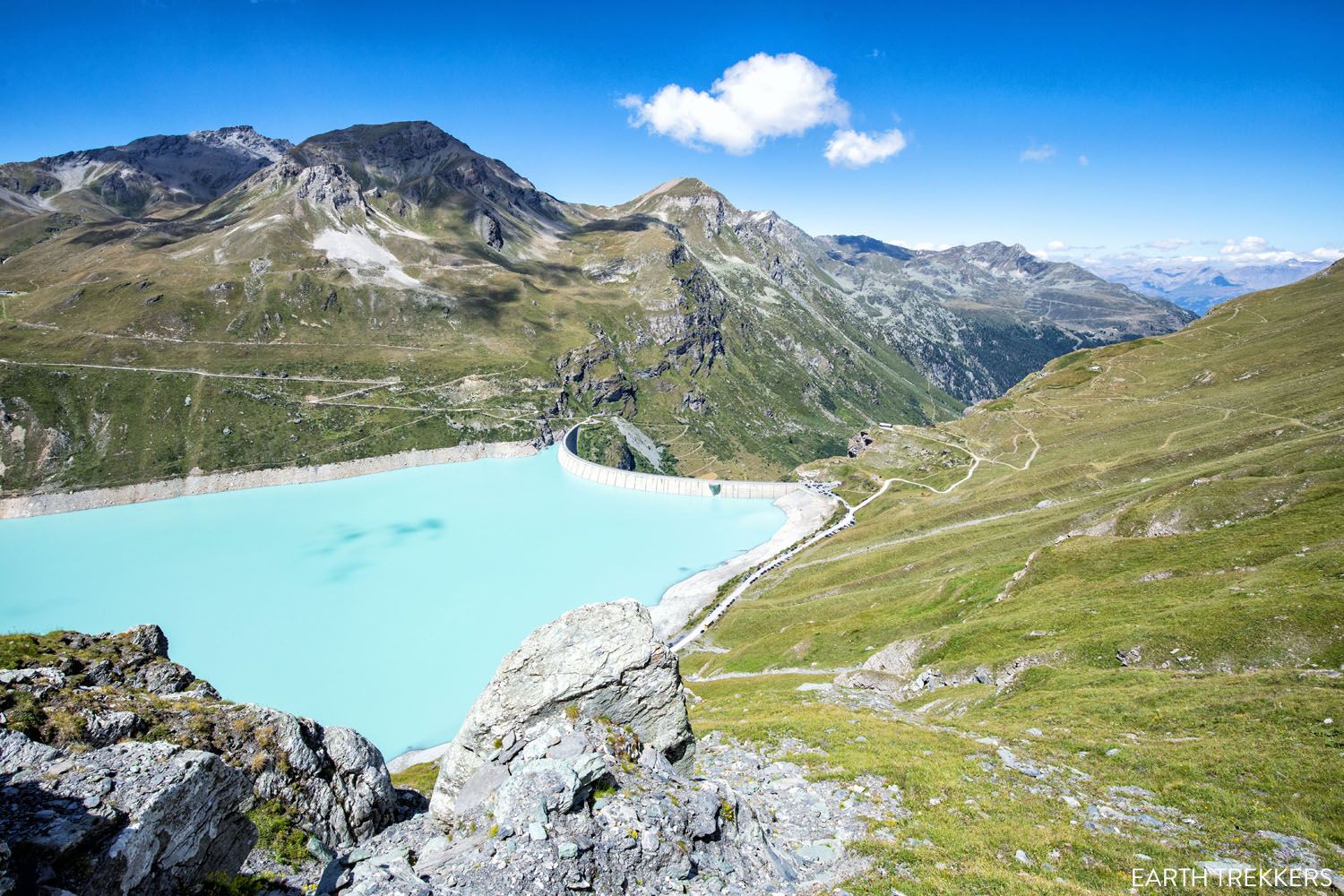
Lac de Moiry
Stage 13 and 14 vs Alternative Stage 13/14: Ending the Walker’s Haute Route
From St. Niklaus (end of Stage 12) you have two ways that you can hike to Zermatt.
One way is to follow Stage 13 up to the Europahütte, sleep there, and then follow Stage 14 to Zermatt. Stage 13 isn’t that exciting. You start off walking through the Mattertal Valley to Herbriggen and then make the exhausting uphill climb through a forest. Once you break through the forest you have amazing views, but you are getting close to the Europahütte at that point. So, there isn’t anything too exciting about Stage 13 overall. It is just to get you up to the Europahütte.
Stage 14 on the other hand is spectacular! You get to cross the Charles Kuonen Suspension Bridge and the first views of Matterhorn are thrilling. And the views keep getting better as you continue onward to Zermatt.
Spending time at the Europahütte was special, gazing out across the Mattertal Valley, and seeing the ibex in the evening was one of our favorite moments of the Walker’s Haute Route.
The other way to get from St. Niklaus to Zermatt is via Alternative Stage 13/14. This is entirely through the Mattertal Valley, which is the same valley the train to and from Zermatt passes through. This is the quickest way to Zermatt and avoids an additional night stay. But you don’t get to see Matterhorn until you reach Zermatt.
People often follow Alternative Stage 13/14 when they need to shorten their Haute Route experience or to avoid another mountain hut stay. If you ever find yourself in Zermatt on a future visit then you can take the train from Zermatt to Randa, hike up to the Charles Kuonen Suspension Bridge and the Europahütte, then follow Stage 14 back to Zermatt.
See our hiking stats, elevation profile, and trail summary for Stage 13 and Stage 14.
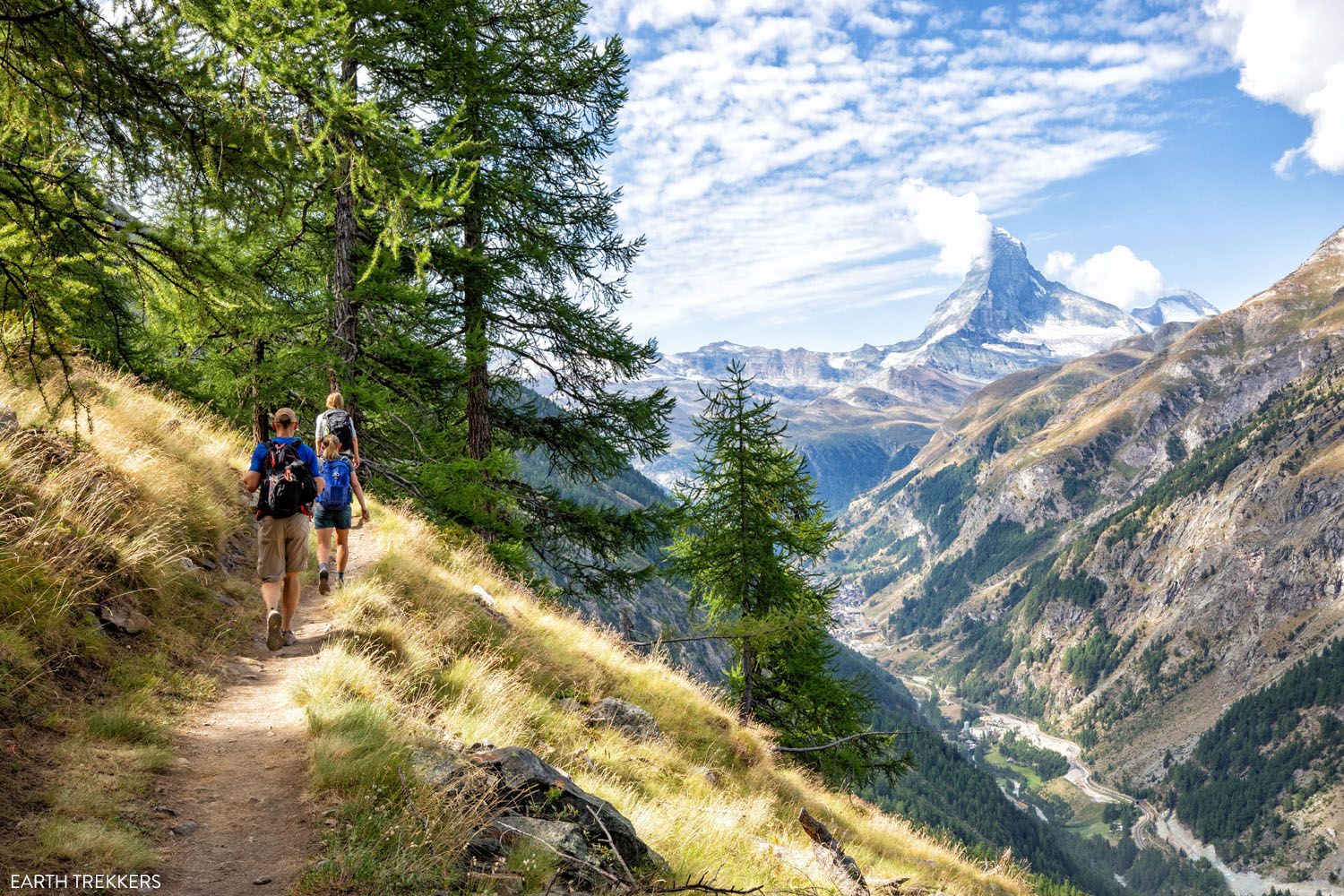
Stage 14 of the Walker’s Haute Route
Stage 13: Gasenried
You may see some older information online or in guidebooks that mentions hiking from St. Niklaus to Gasenried and then onward to the Europahütte via the Europaweg trail. They will talk about the strenuousness of hiking to Gasenried and suggest that you consider staying there before hiking to the Europahütte.
But hiking to Gasenried is no longer necessary. A portion of the high and thrilling Europaweg trail from Gasenried to Europahütte is now permanently closed due to rockfall dangers. The Europaweg has been rerouted from Gasenried down through an uninteresting forest to Herbriggen and then up to Europahütte from there. Herbriggen is located in the Mattertal Valley just as is St. Niklaus. So, you might as well just walk through the Mattertal Valley to Herbriggen and then take the trail up to the Europahütte.
Read more about our experience hiking to up Gasenried and then down to Herbriggen in our Stage 13 recap.
Mountain Huts
There are 4 stages that end at mountain huts:
- Stage 5: Cabane du Mont Fort or Cabane de Louvie
- Stage 6: Cabane de Prafleuri
- Stage 9: Cabane de Moiry (if you do not stay in Grimentz)
- Stage 13: Europahütte
If you prefer a more rugged experience and want to stay in as many mountain huts as possible then consider adding an extra day to your Walker’s Haute Route experience in order to stay in both Cabane du Mont Fort and Cabane de Louvie.
If you prefer to avoid as many mountain hut stays as possible, then stay in Grimentz at the end of Stage 9 and follow Alternate Stage 13/14 from St. Niklaus to Zermatt. The later also shortens the trek by a day.
A mountain hut stay at the end of Stage 5 and Stage 6 cannot be avoided. But you are likely to have a better mountain hut experience at Cabane de Louvie than Cabane du Mont Fort. If you are considering this, then you must read our section above titled “Stage 5 – Strategies Regarding This Stage” and pick the strategy that best aligns with your abilities.
I would encourage you to embrace the idea of staying in the mountain huts. They are all in an amazing location with an incredible setting. They are warm and inviting, you will get good meals, and you are likely to make new friends.
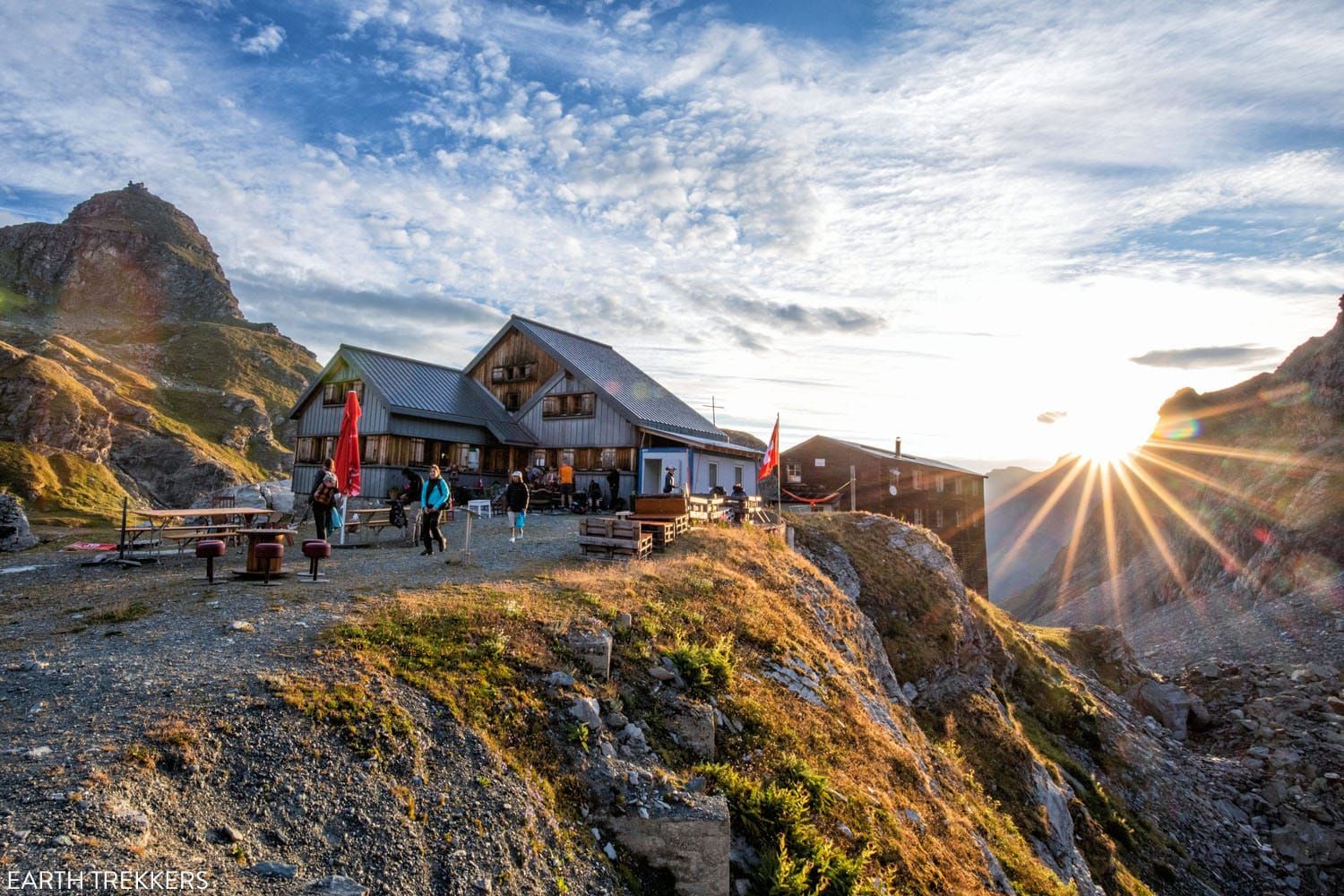
Cabane de Prafleuri
Shortcuts to the Walker’s Haute Route
Many people might want to experience the Walker’s Haute Route but ease back on the strenuousness when possible. Or you might find yourself more fatigued than you thought and need to take a shortcut. So, I have outlined various shortcuts you should know about as you plan your Walker’s Haute Route experience.
Stage 1: Take the train from Chamonix to Argentière and begin the Haute Route there. This means you will skip Stage 1 and start the Haute Route with Stage 2. This could help keep your legs fresher longer.
Stage 5: Take the gondola from Le Châble to Verbier to Les Ruinettes. This eliminates a massive climb.
Stage 5: Stay in Cabane du Mont Fort instead of Cabane de Louvie. Cabane de Louvie is located along a detour off of Stage 6 so you will be adding some extra distance and a fair amount of elevation change by staying at Cabane de Louvie.
Stage 8: The hike from Arolla to Les Haudères is a shorter and less interesting day, compared to other stages of the Walker’s Haute Route. So, you will not be missing much if you take the bus from Arolla to Les Haudères (or La Sage) instead. You could also do this if you are looking to eliminate a day. Just keep in mind that in that situation you would be eliminating a welcomed active recovery day.
Stage 9: Avoid the hike up to Cabane de Moiry. It is a detour off Stage 10. You will avoid adding some extra distance and elevation change by staying in Grimentz instead. Once you reach the Moiry Glacier Bus Stop take the bus to Grimentz and then return via bus to the same spot the next day to hike Stage 10.
Stage 10: Once you cross Col de Sorebois you will be hiking down a ski slope to Zinal. You can catch one of the gondolas to avoid this big descent. The long descent can be a killer on the knees. This is also a less interesting stage compared to the other stages of the Walker’s Haute Route. So, if you stayed in Grimentz then you could take a bus to Zinal as a way to rest or to eliminate a day from the trek.
Stage 12: Once you reach Jungen there is a gondola down to St. Niklaus, which can help you avoid a strenuous descent.
Stage 13: Hike Alternate Stage 13/14 from St. Niklaus to Zermatt. This trail stays in the valley, so you avoid the climb up to Europahütte and you end the Haute Route a day early.
See our Walker’s Haute Route Guide to learn more about each of these stage, as well as our Overview Of All 14 Stages.
The book Trekking Chamonix to Zermatt, The Classic Walker’s Haute Route by Kev Reynolds gives guidance on alternate routes for many of the stages. We looked at these more from the perspective of keeping us safe in the event of bad weather. But some of them may be less strenuous than the main route so refer to this book for more information.
PRO TRAVEL TIP: If you find yourself really fatigued and think you might need to skip a day then check with your accommodations regarding a taxi, bus, or train service to your next accommodation location. We used a luggage transfer service, and they were able to deliver our luggage to the end of each stage except for the end of Stage 5, Stage 6, and Stage 13 (Europahütte). At the end of Stage 9 they can deliver to Grimentz but not Cabane de Moiry. If our luggage could be delivered to the end of all the other stages, then there should be a way for you to get there if you find you need to skip a stage. Ask the staff at your accommodation to help you arrange a taxi or to help route you via public transport.
Splitting the Walker’s Haute Route into Two Trips
If you are not able to take the time to hike the entire Walker’s Haute Route during a single holiday, then consider splitting it into two separate holidays. Hike a portion of it one summer and then return another summer to pick up where you left off.
I suggest splitting the trek in the middle, either ending in Arolla (end of Stage 7) or ending in Les Haudères (end of Stage 8). Either way you would take a bus to Sion and then a train to your departure city (typically Geneva or Zurich). If you catch the bus in Arolla then you will have to switch buses in Les Haudères. Check with your accommodations in Arolla or Les Haudères if you would prefer to arrange a taxi service.
For your second trip, return to Arolla or Les Haudères to finish the Walker’s Haute Route.
The hike from Arolla to Les Haudères (Stage 8) is a fairly mild day, and less interesting day, compared to other stages of the Walker’s Haute Route. So, you could either hike this stage at the end of your first trip to avoid the extra bus transfer between Arolla and Les Haudères. Or you could think of this stage as a warmup for when you return to hike the second portion of the Haute Route.
If you trek all 14 stages, then this means you would trek 7 or 8 stages during your first trip and then 7 or 6 stages during your return trip. All of the strategies mentioned throughout this article are still available to you in terms of eliminating days and/or easing the strenuousness of the trek.
Another advantage with this approach, is that it could allow you to spend time seeing Chamonix during your first trip and allow you time to see Zermatt during your second trip.
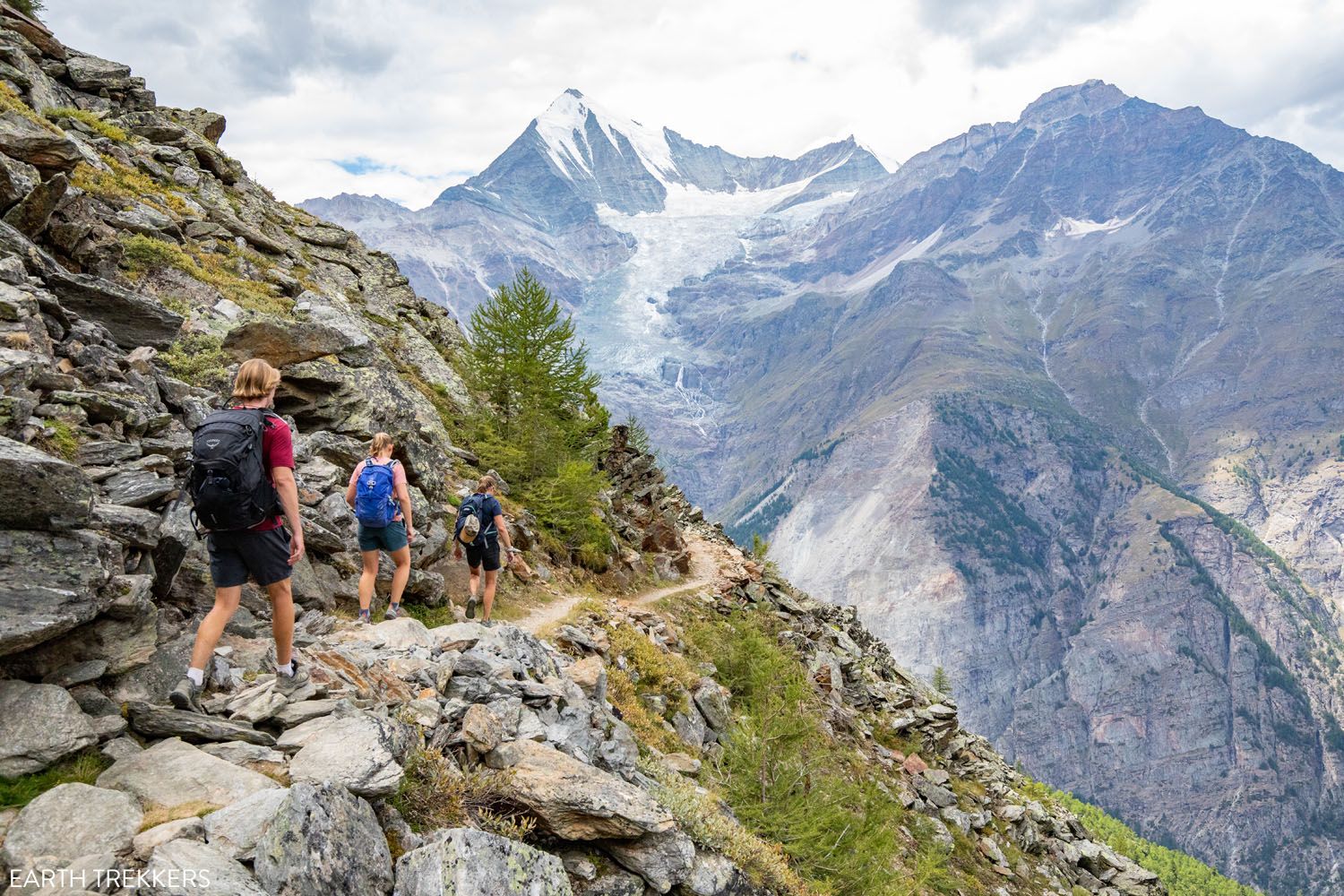
Walkers Haute Route Stage 13
Suggestions for Shorter Treks
If you only want to experience a portion of the Walker’s Haute Route instead of the entire thing, then we suggest the following options based on the number of days you have for your trip.
All of these options take into account that you still need to add a day to get to the start of the trek, a day to get to your departure location after the trek, and a day to get home. This adds up to 3 days, so a 7-day trip is only 4 days of trekking.
Most of these options start with Stage 5, that means you will need to get to Le Châble before starting your trek. This will put you right at the beginning of the more remote portion of the Walker’s Haute Route and give you the best experience in terms of what the Haute Route offers.
6 Day Trip: Start in Le Châble and end in Arolla. Complete Stages 5, 6, and 7. To begin the journey home, take a bus from Arolla to Sion and then a train from Sion to your departure city.
7 Day Trip: Start in Le Châble and end in Grimentz. Complete Stages 5, 6, 7, and 9. Skip Stage 8 by taking a bus from Arolla to Les Haudères (or La Sage). To begin the journey home, take a bus from Grimentz to Sierre/Siders and then a train to your departure city.
9 Day Trip: Start in Le Châble and end in St. Niklaus. Complete Stages 5, 6, 7, 9, 11, and 12. Skip Stage 8 by taking a bus from Arolla to Les Haudères (or La Sage). And skip Stage 10 by taking a bus from Grimentz to Zinal. Just keep in mind that you are skipping what I would call active recovery days. From St. Niklaus you can take a train to your departure city.
10 Day Trip: Either add Stage 8 or Stage 10 into the 9 Day Trip. Or follow the 9 Day Trip and when you reach St. Niklaus take a train to Zermatt and spend a day there. From Zermatt take a train to your departure city.
14 Day Trip: Start in Chamonix and combine Stage 1 and Stage 2 into a single day (or start in Argentière and eliminate Stage 1 completely). Then skip either Stage 8 or Stage 10 by taking a bus instead. And then hike Alternate Stage 13/14 through the valley to Zermatt (eliminating an overnight at the Europahütte). After a restful night sleep in Zermatt take a train to your departure city.
PRO TRAVEL TIP: If you plan to start with Stage 5 then take a train from your arrival city to Le Châble. You can either spend that night in Le Châble or Verbier since they are connected by a gondola.
Here is the link to check bus schedules and to book tickets.
Here is the link to check train schedules and to book tickets.
Suggestions for Longer Treks
If you are fortunate to be able to add time to your holiday, then as you plan your Walker’s Haute Route experience consider a longer stay in Chamonix and/or Zermatt. Both are amazing towns with incredible hiking and other adventurous activities. See our content on Chamonix, as well as our Best Things To Do In Zermatt and our 12 Epic Day Hikes In Zermatt guides for suggestions.
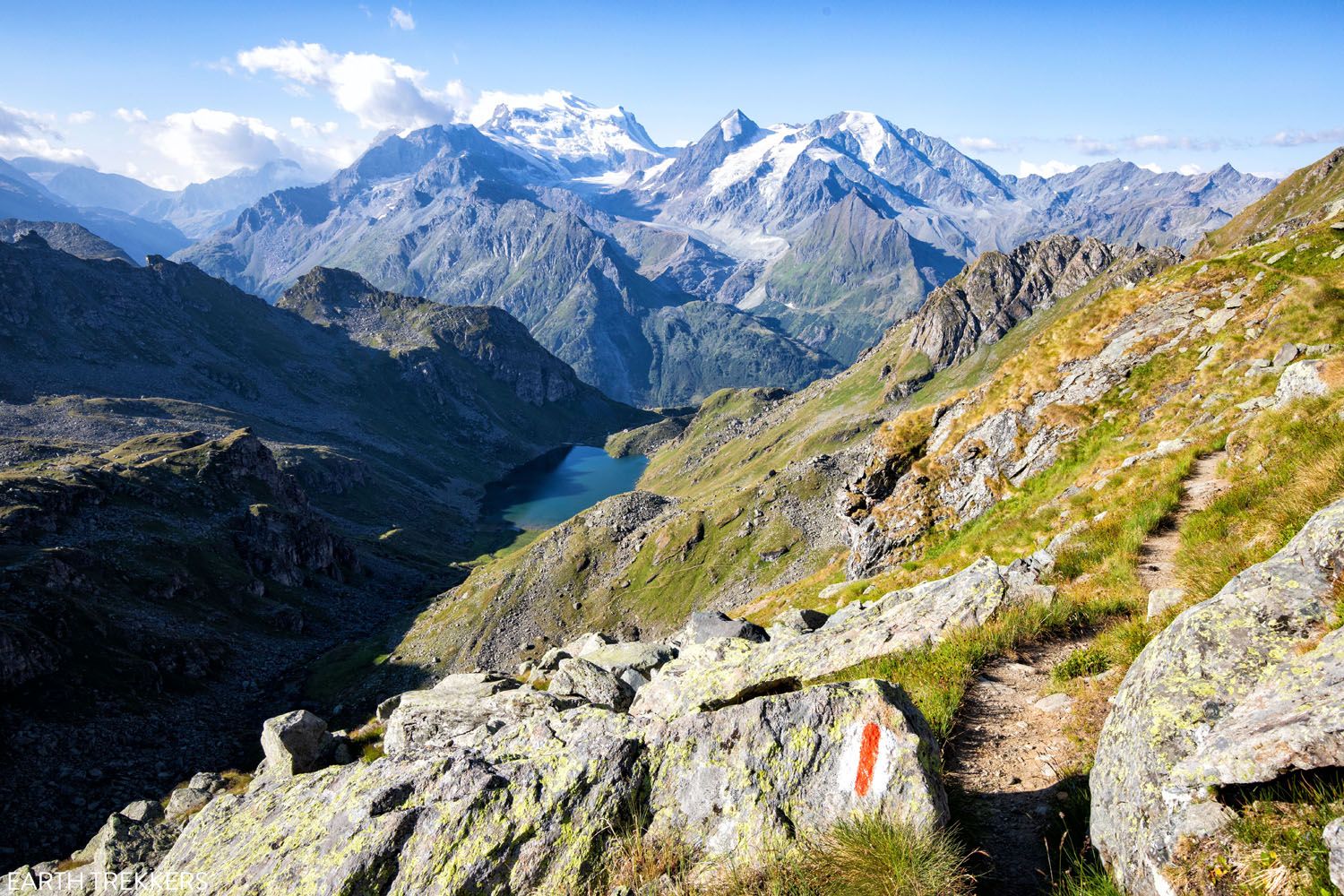
Walker’s Haute Route Stage 6
Fitness
As you plan your Walker’s Haute Route experience a key thing to think about is your level of fitness.
A 16 km/10-mile day with 1,100 meters/3,500 feet of total ascent should be easy for you, before starting this trek.
The day after day hiking does build up a level of fatigue that sticks with you to the end of the trek, so you need to have an excellent level of fitness before starting this walk, or you will be miserably tired and sore for most of it.
We were all doing long, hilly runs of 8 to 13 miles in the months leading up to the Walker’s Haute Route. And before starting the Haute Route we spent time doing some mountain hiking (we spent 10 days hiking in the Dolomites and 4 days hiking in Chamonix).
We went into the Haute Route with a high level of fitness. Even so, the first few climbs were still tough.
As you progress through the Walker’s Haute Route stages, your level of fitness will increase. The big climbs get easier, partly because you are more fit, but also because you just mentally and physically adjust to day after day of big mountain ascents.
Before planning your Walker’s Haute Route experience, evaluate your level of fitness, or the level of fitness you honestly believe you can achieve before you start the Haute Route. Your assessment may force you to pick a shorter version of the Haute Route or convince you to break it up into multiple trips.
Also consider using the gondolas when possible, to help reduce the strain on your body and enable you to keep going.
If you have any questions about how to plan your Walker’s Haute Route experience, let us know in the comment section below.
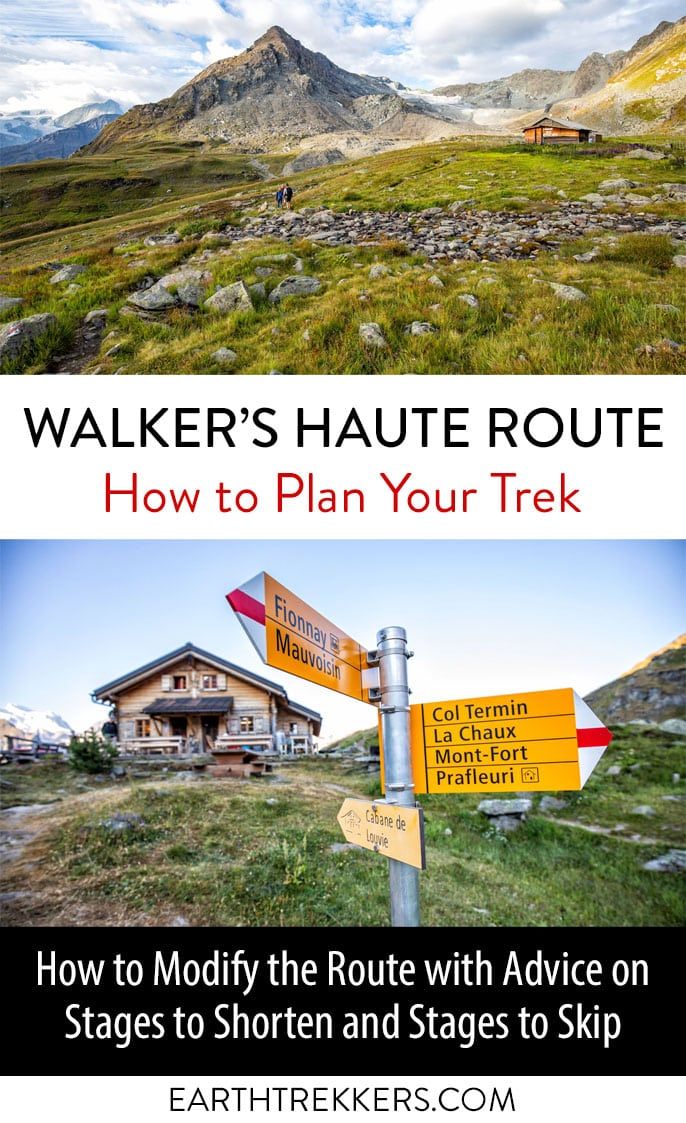
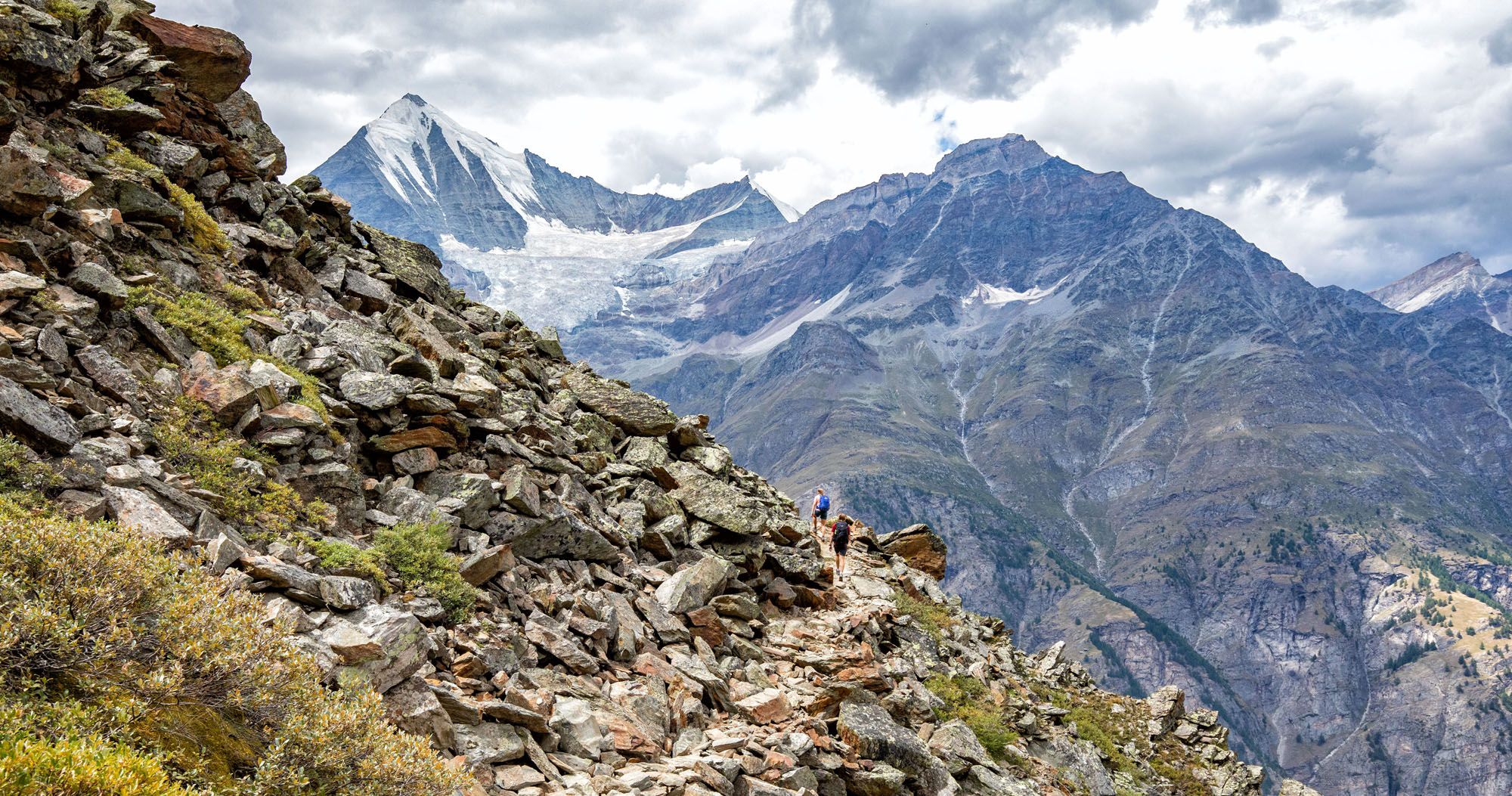

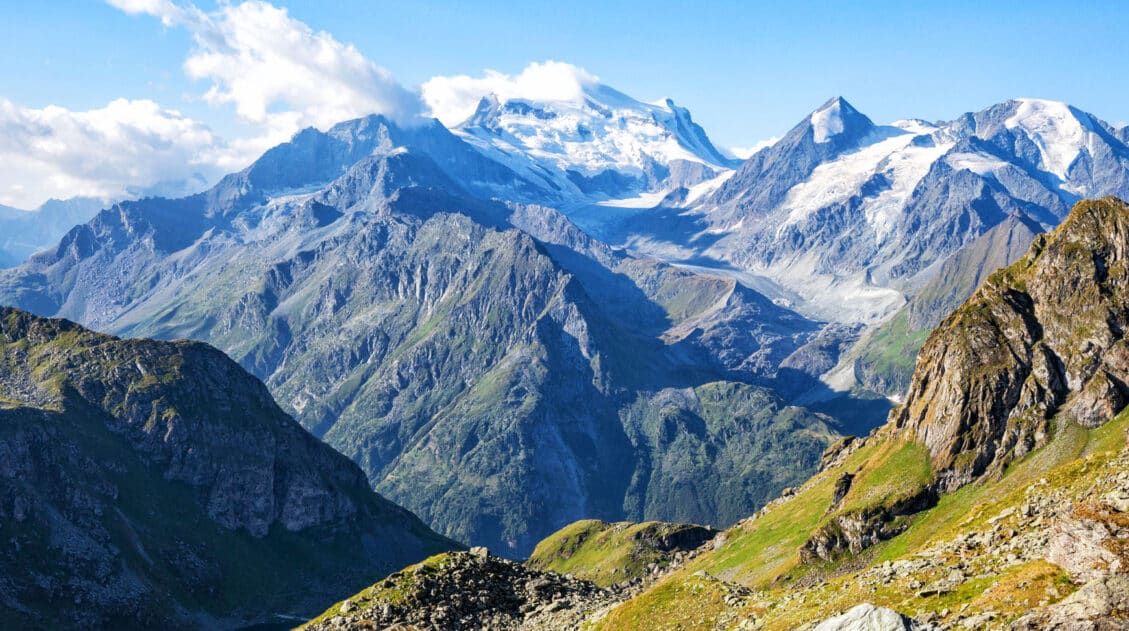
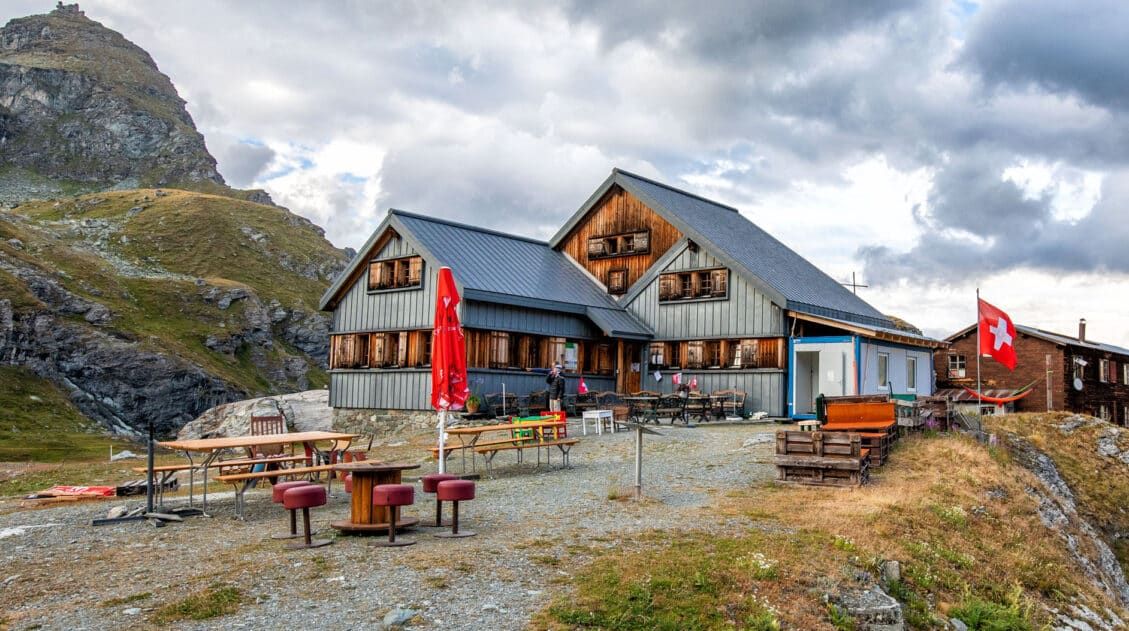
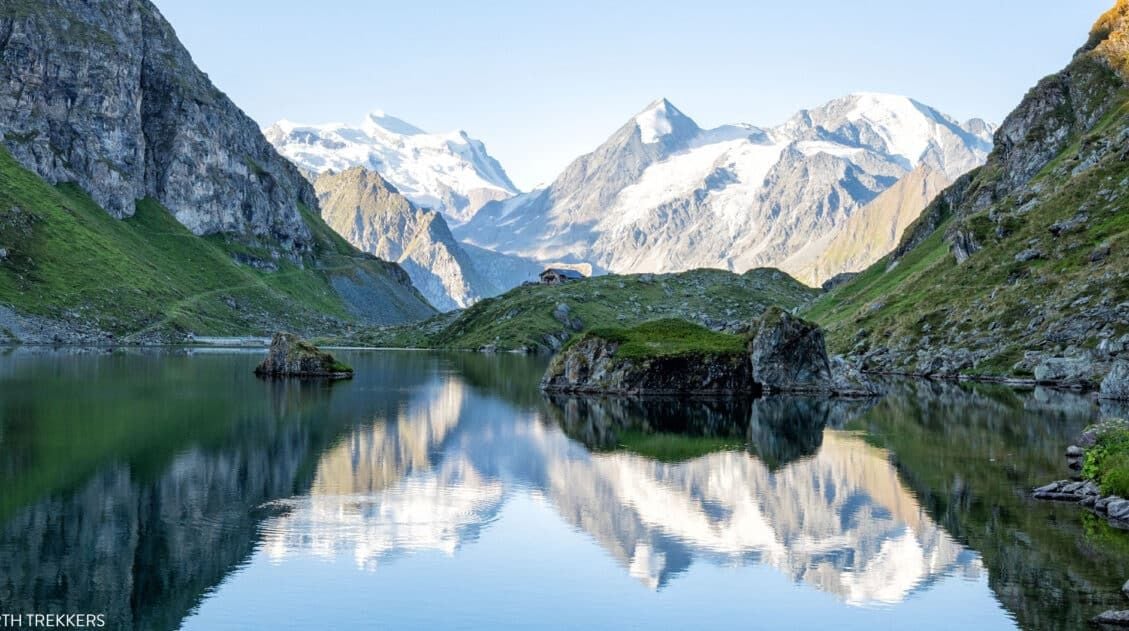
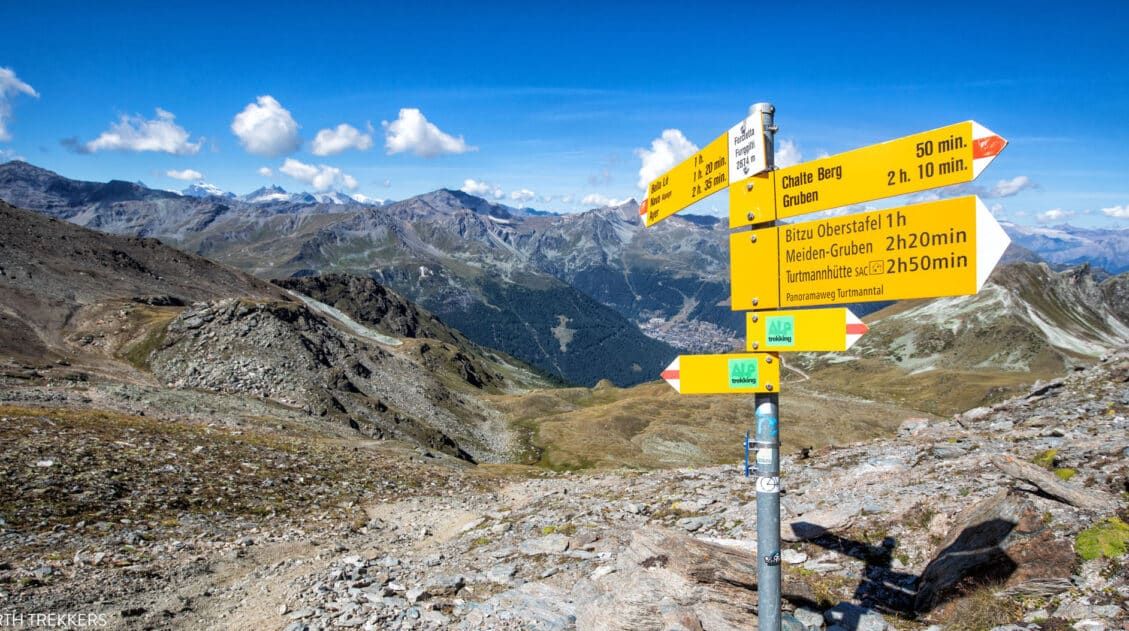
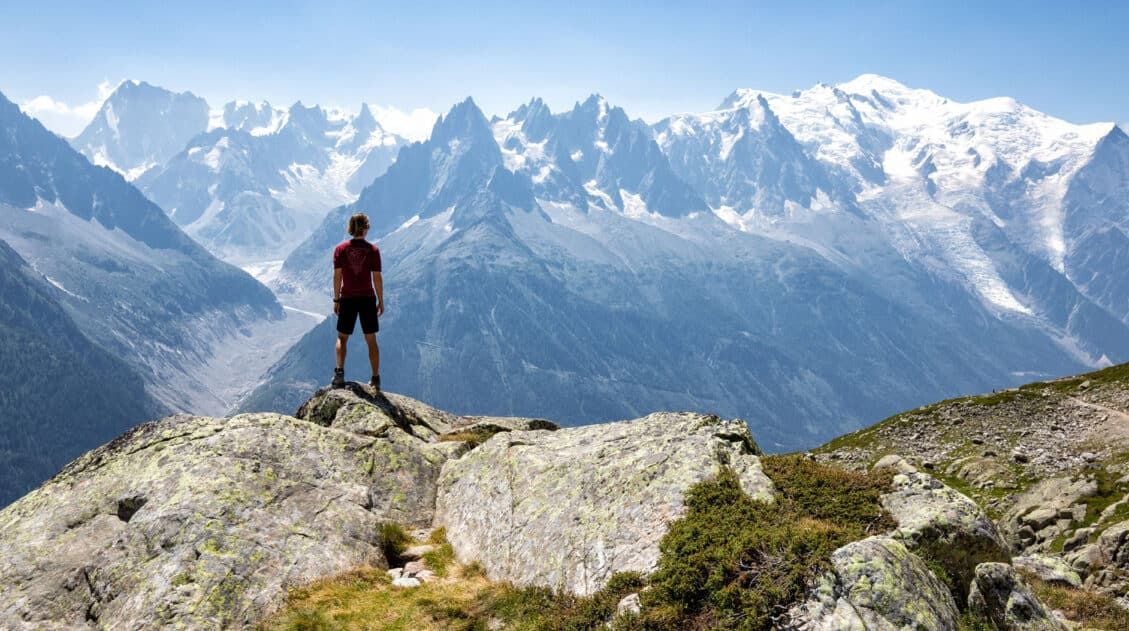
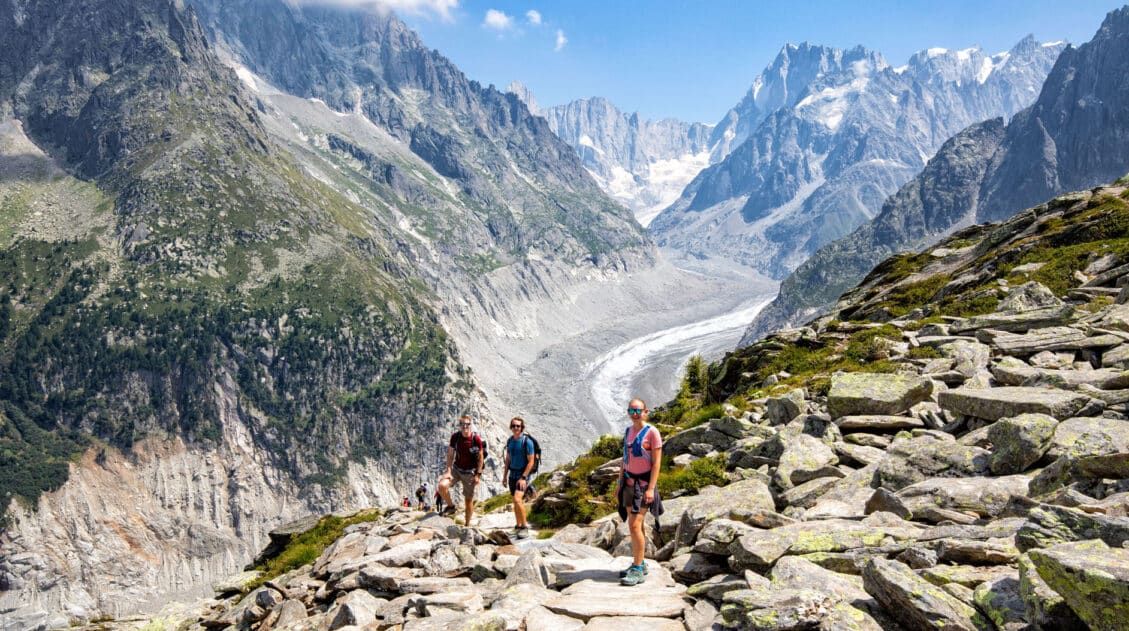
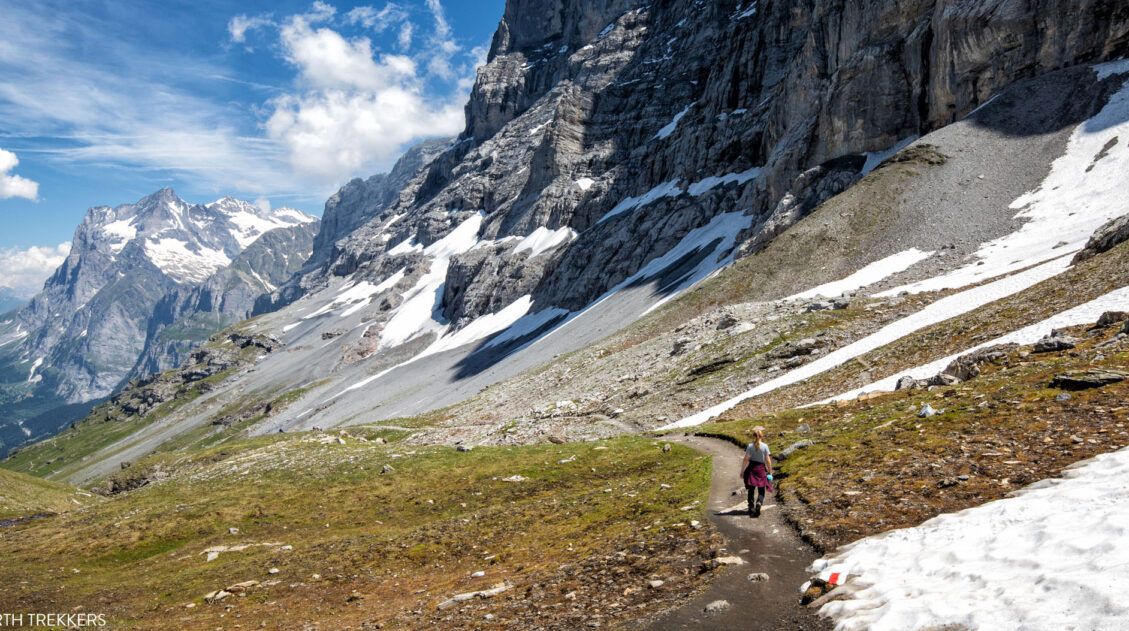
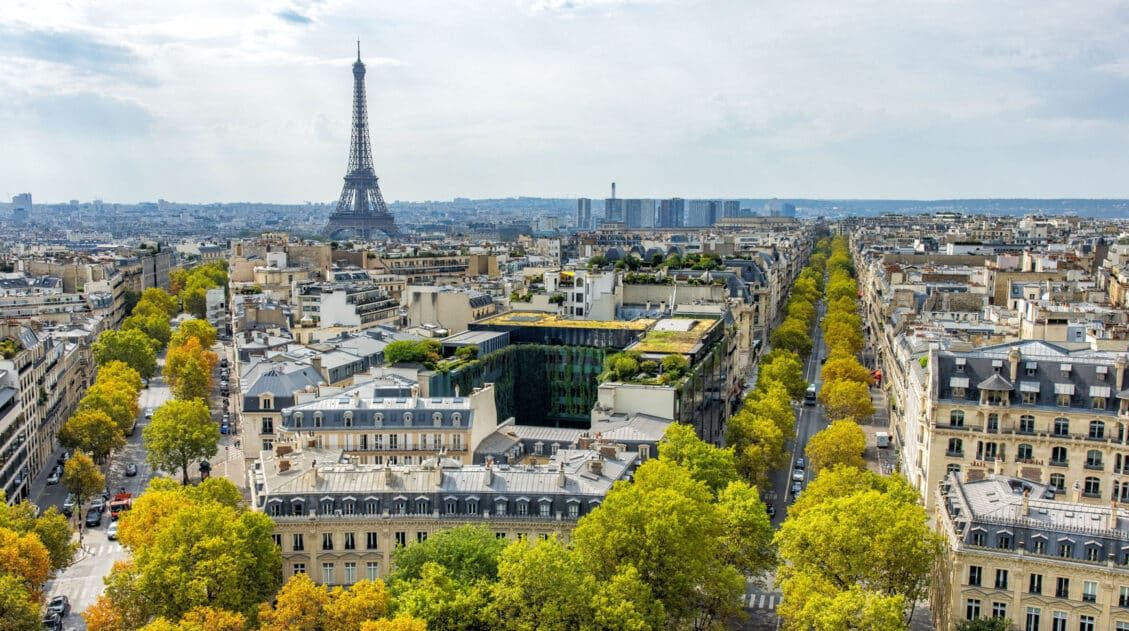
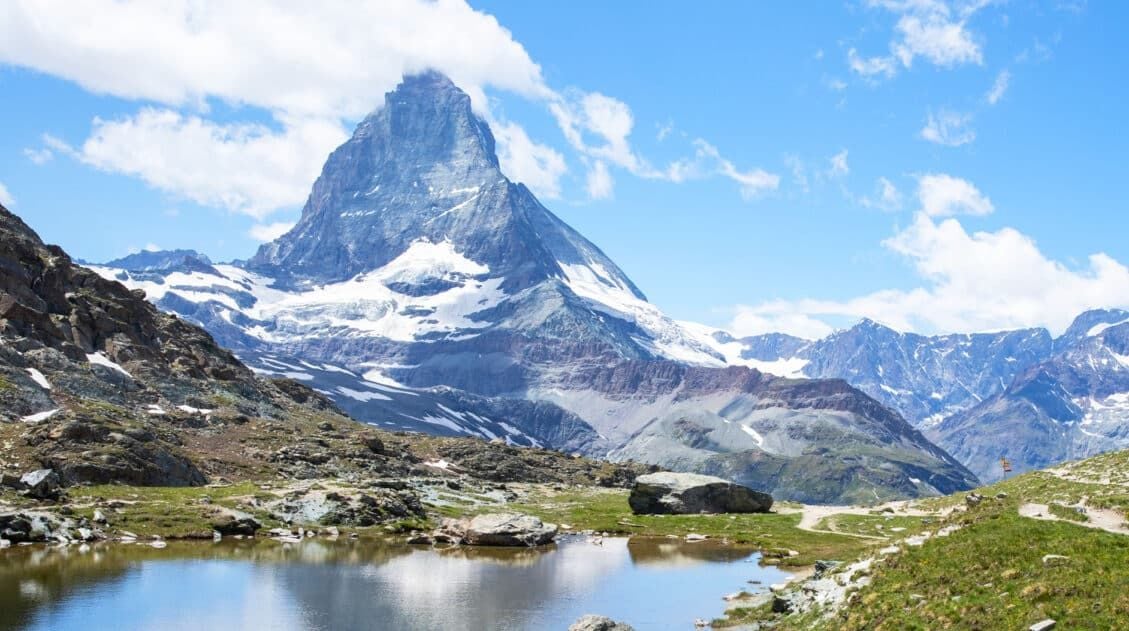
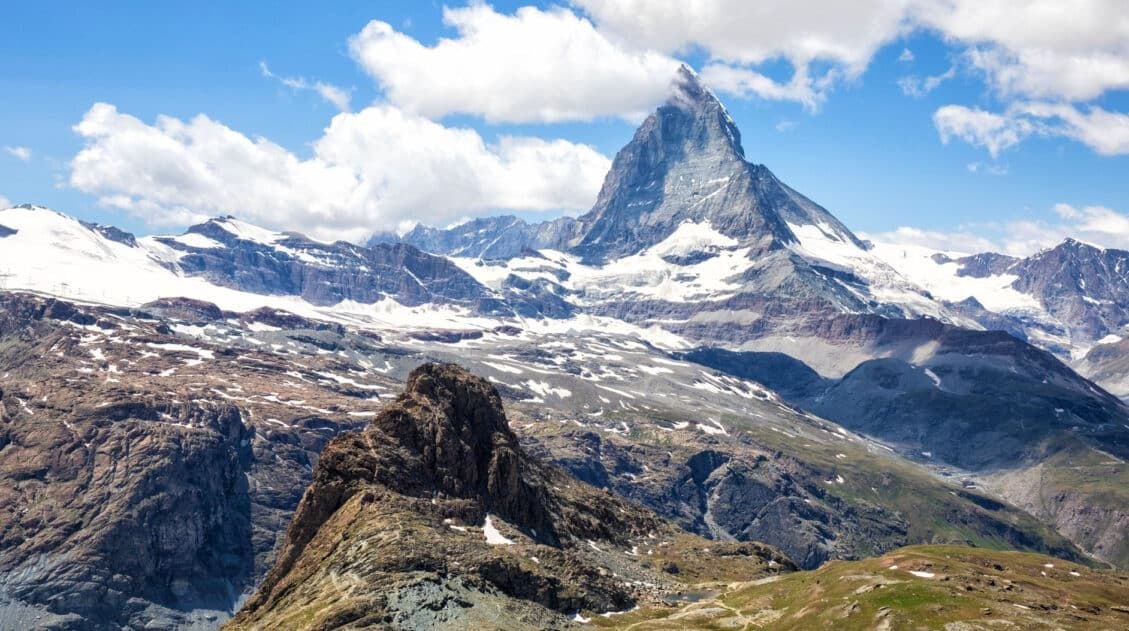
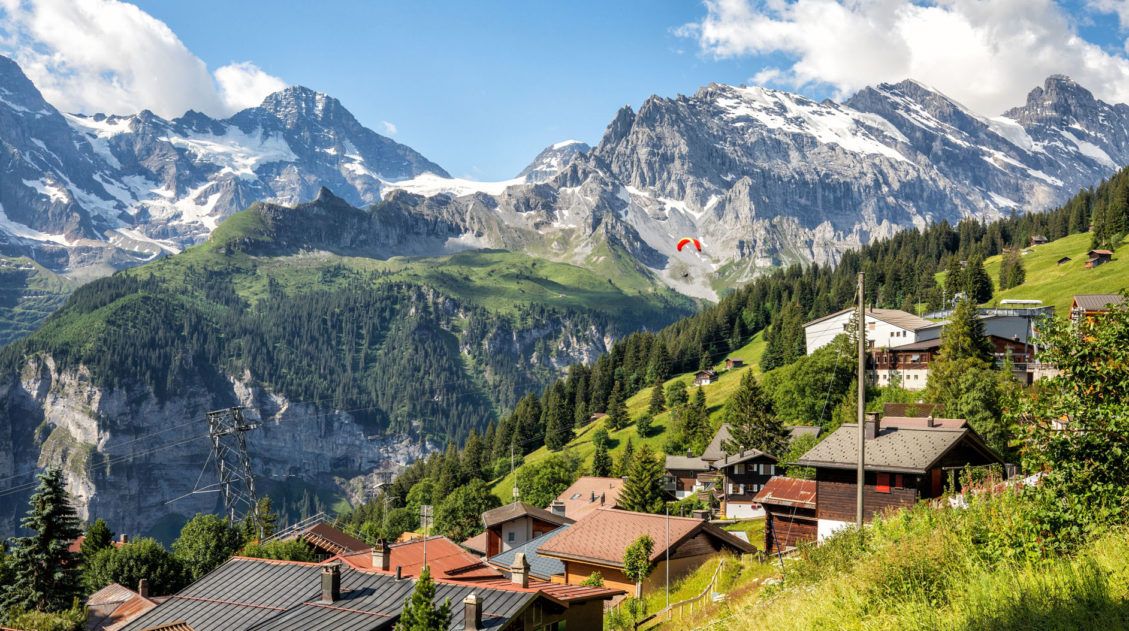
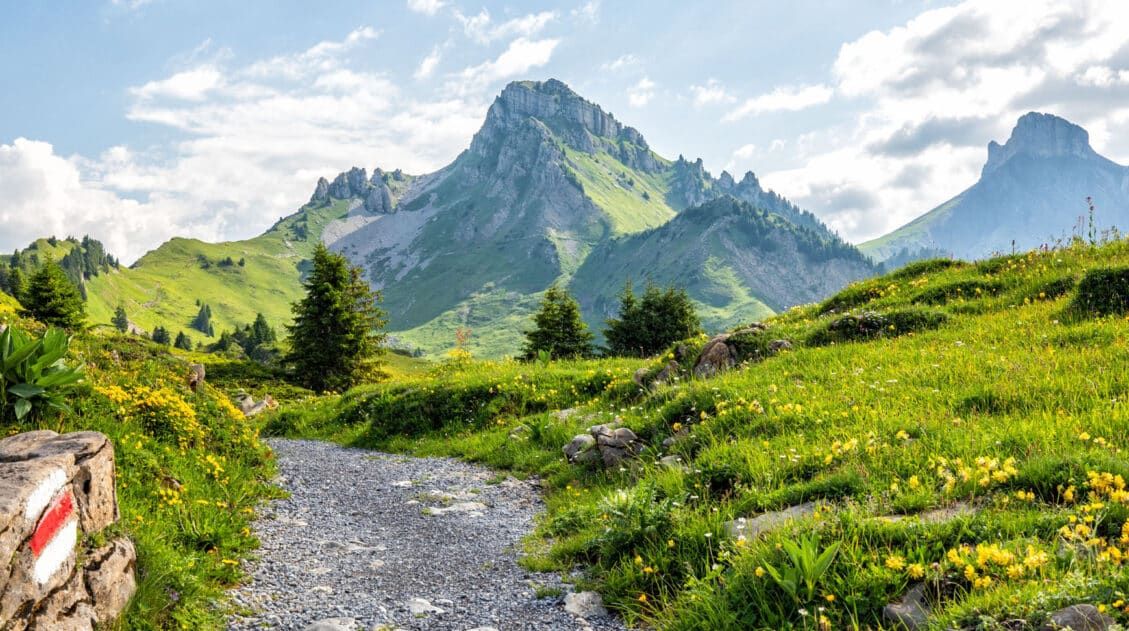
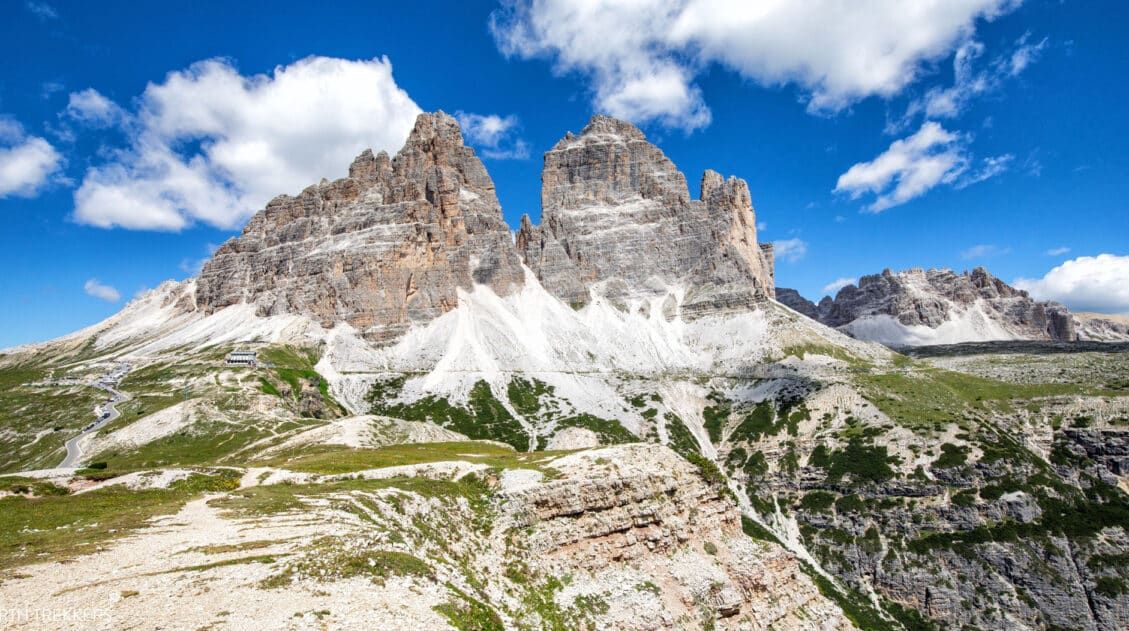
Comments 8